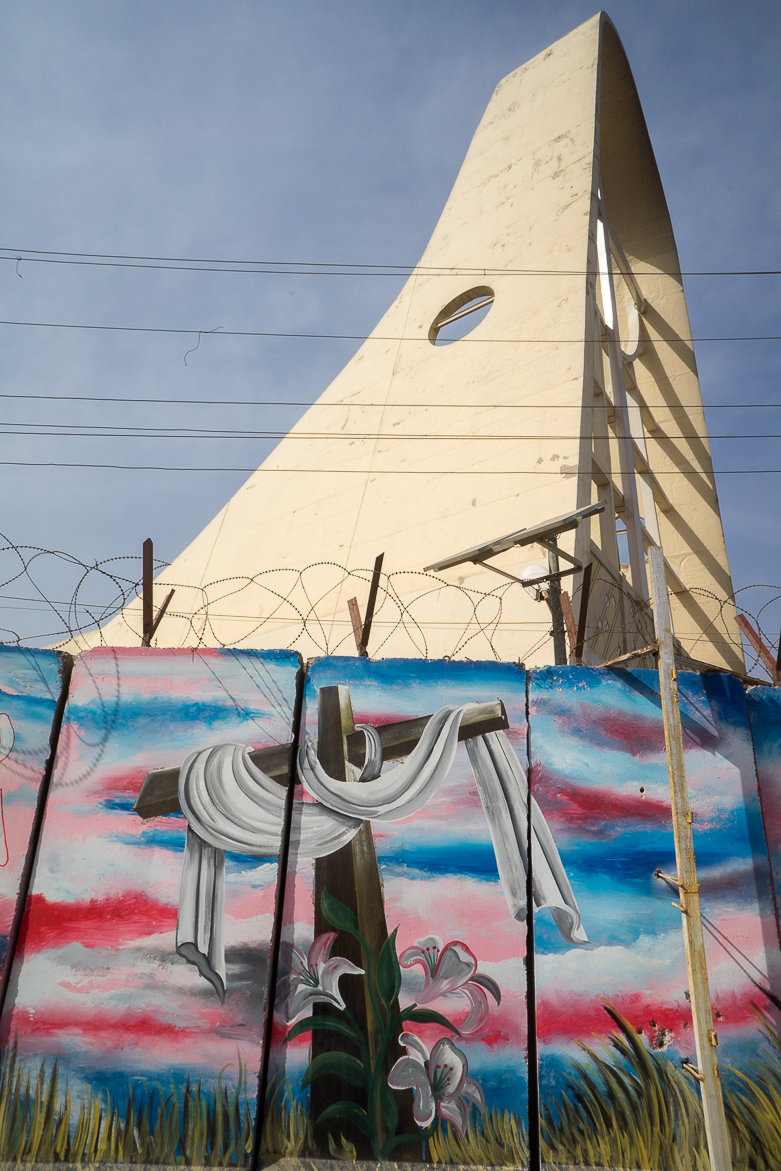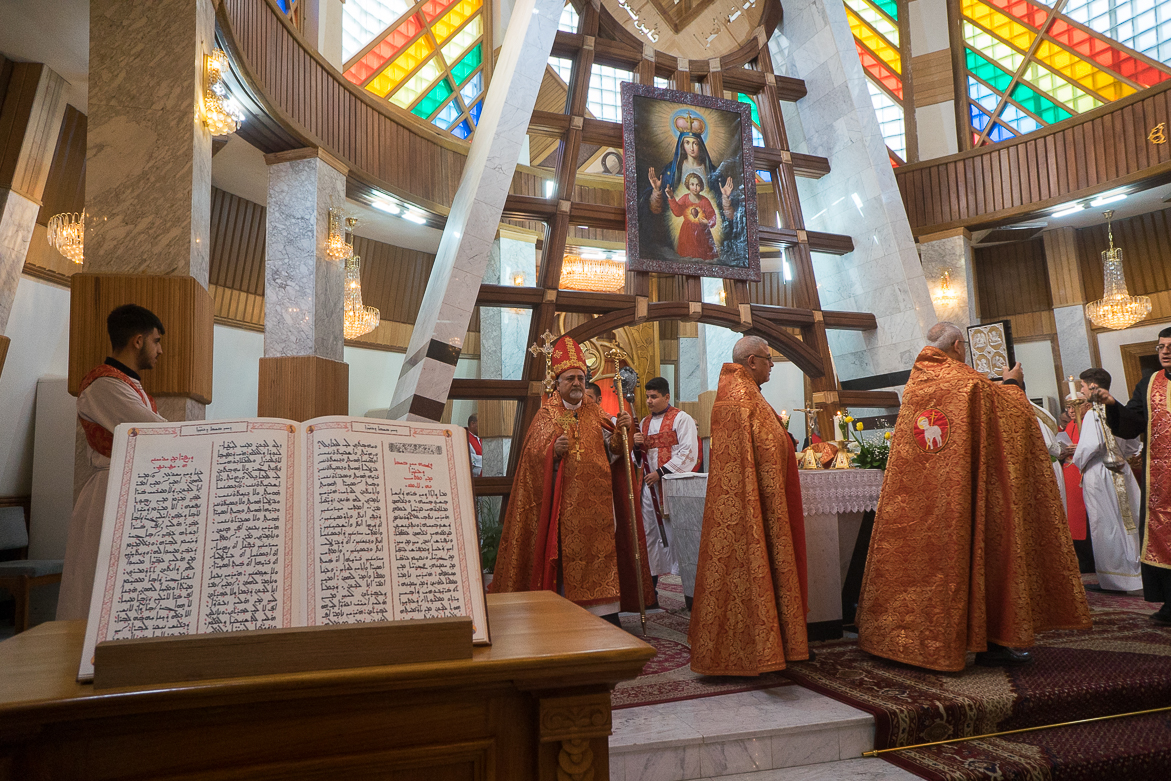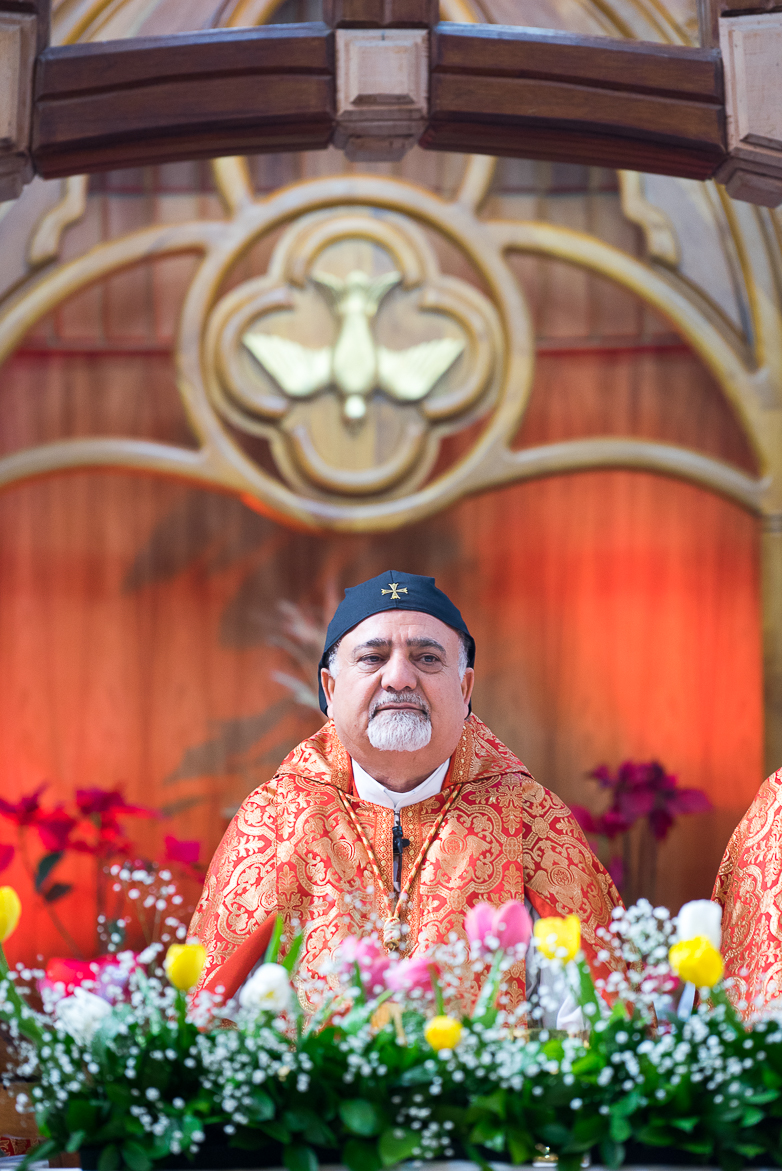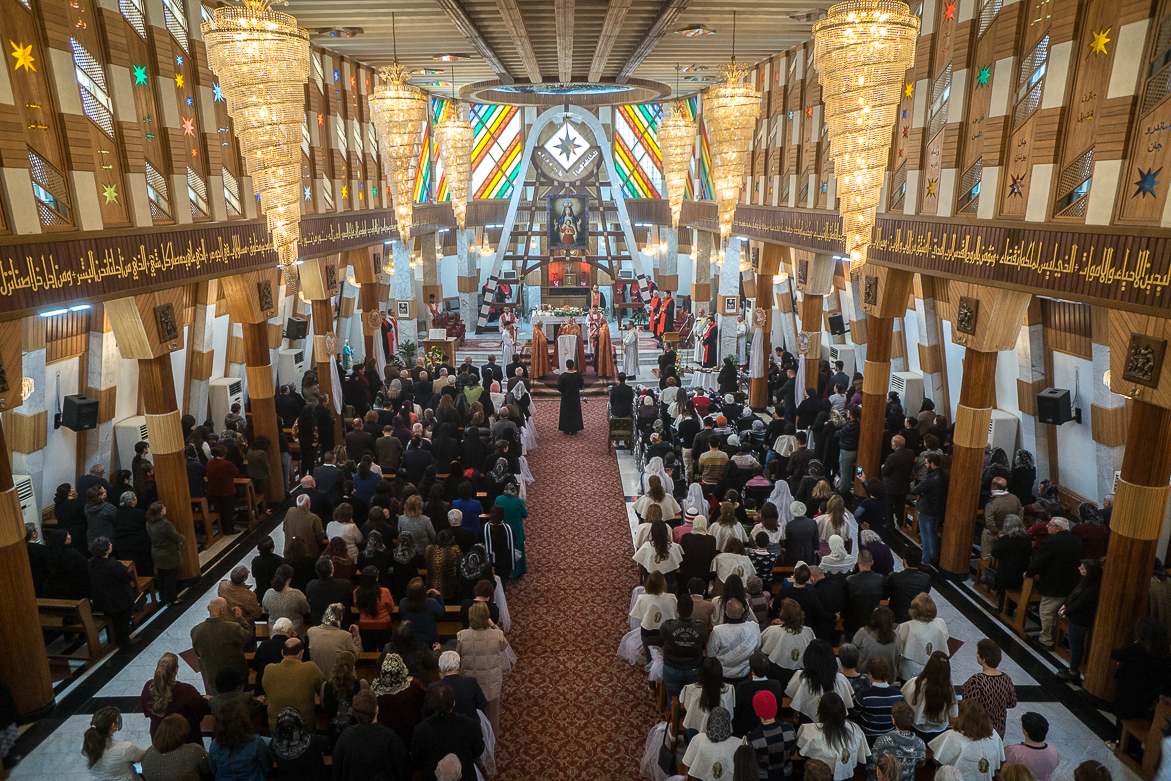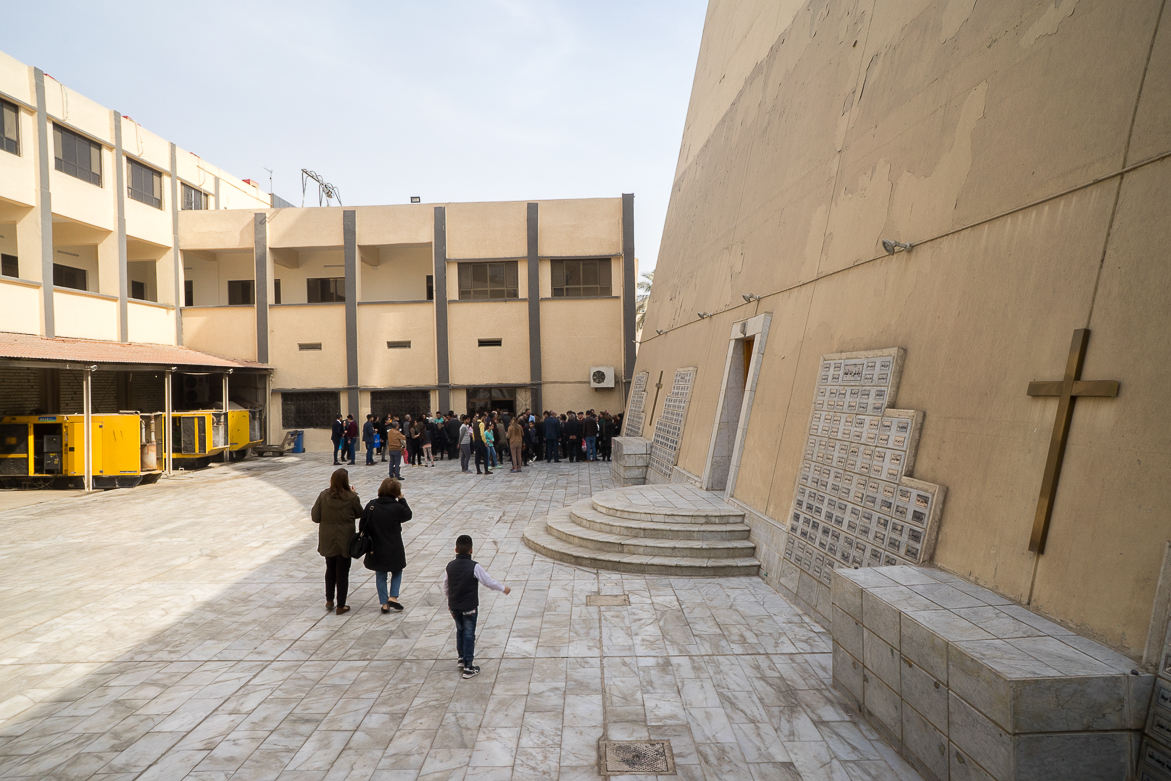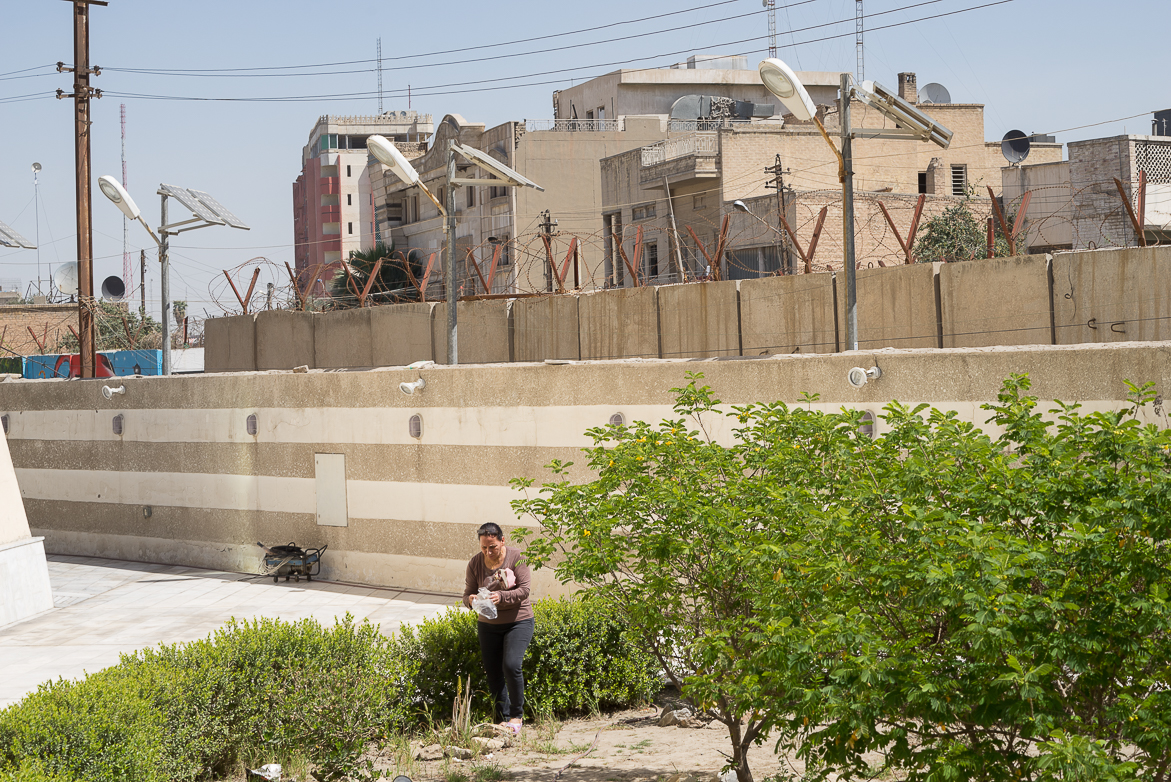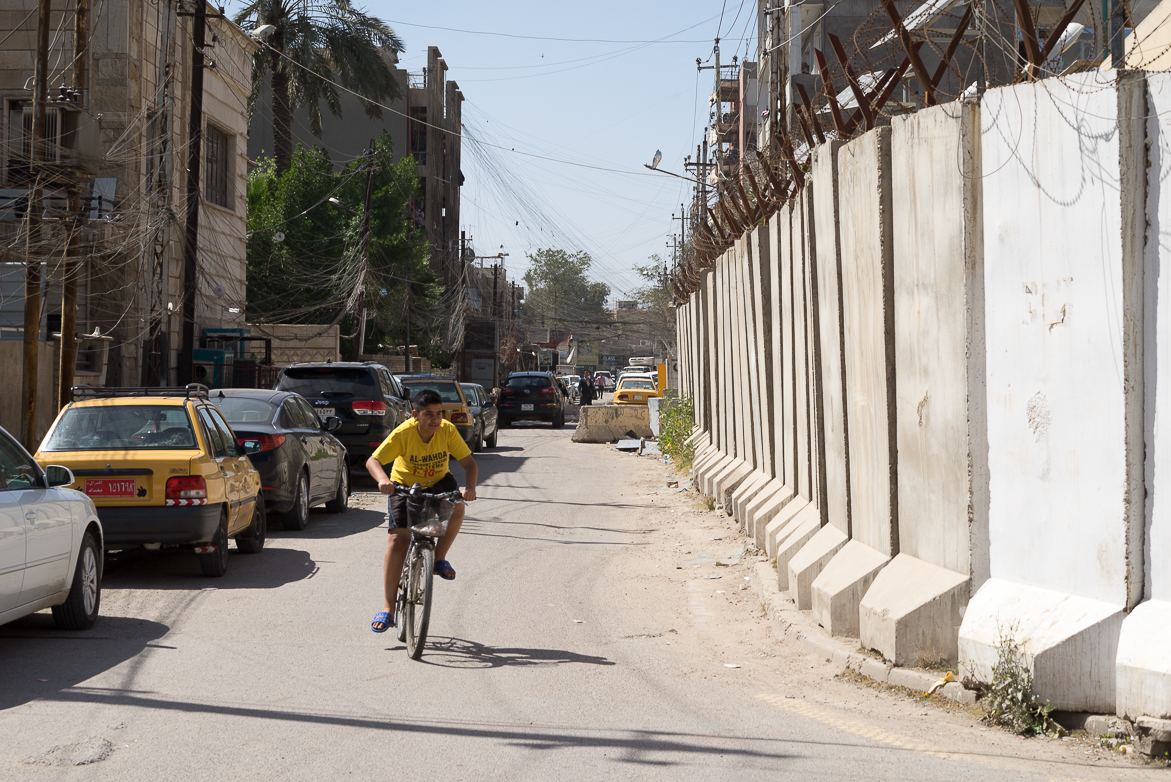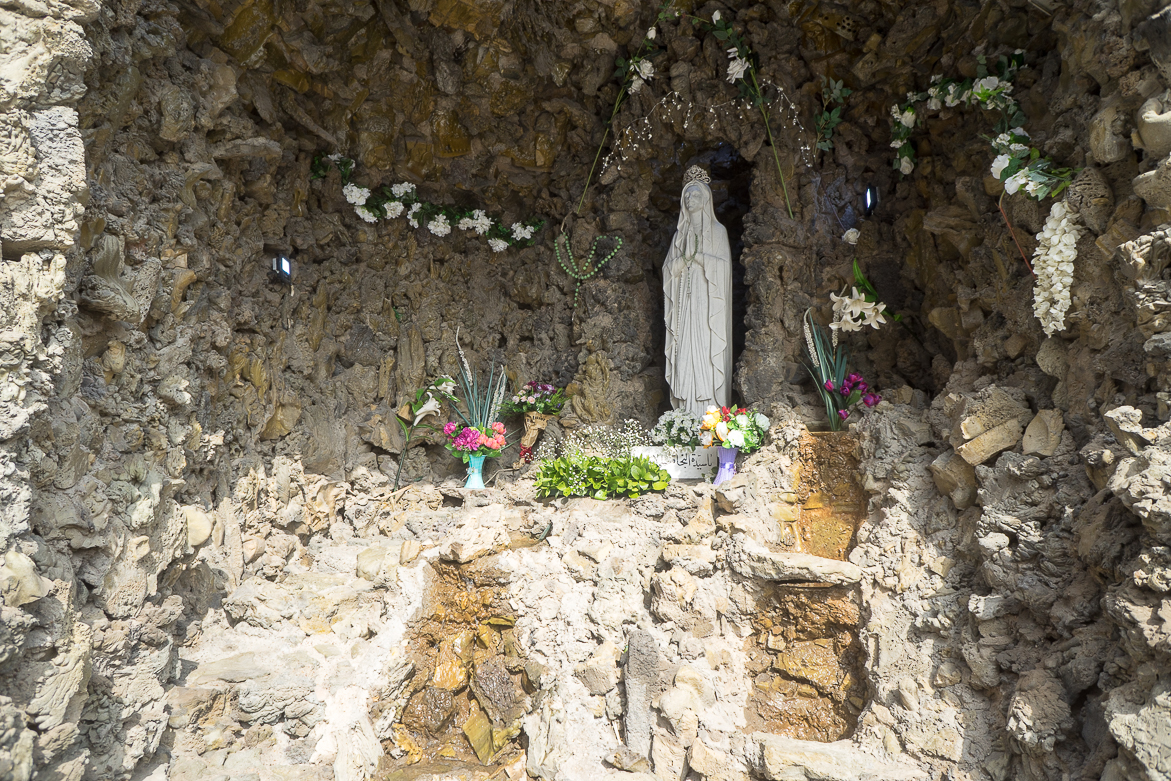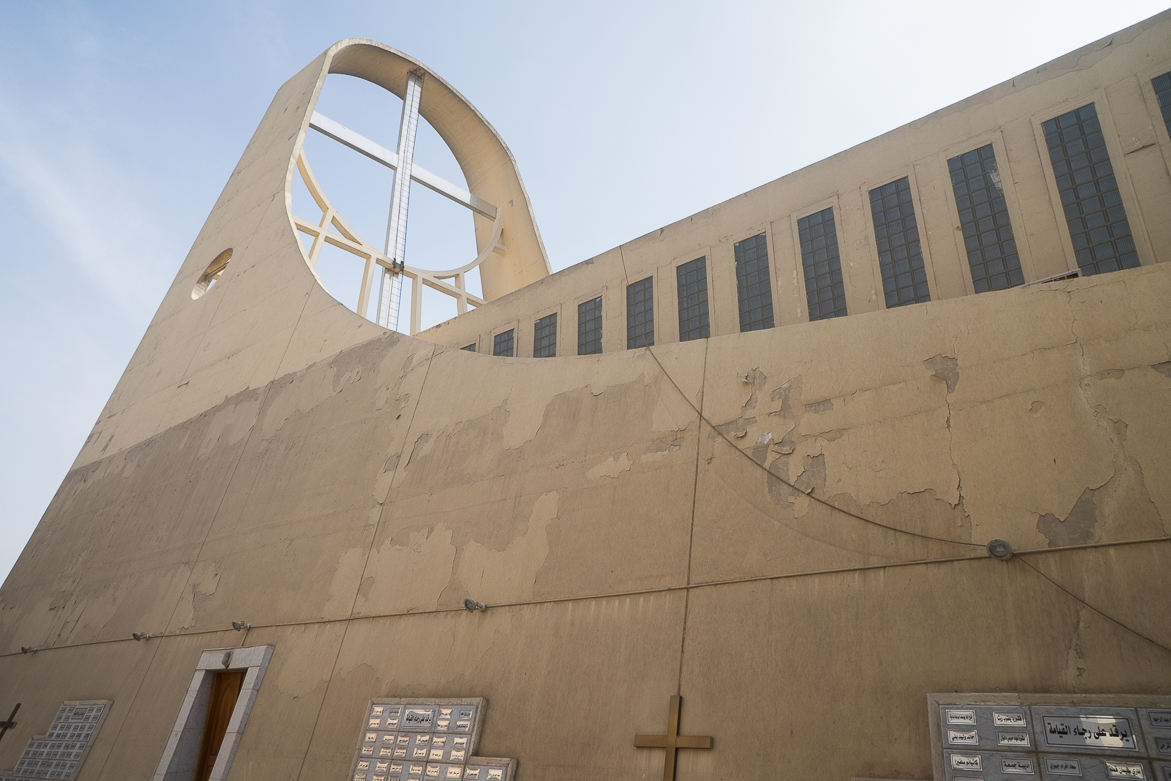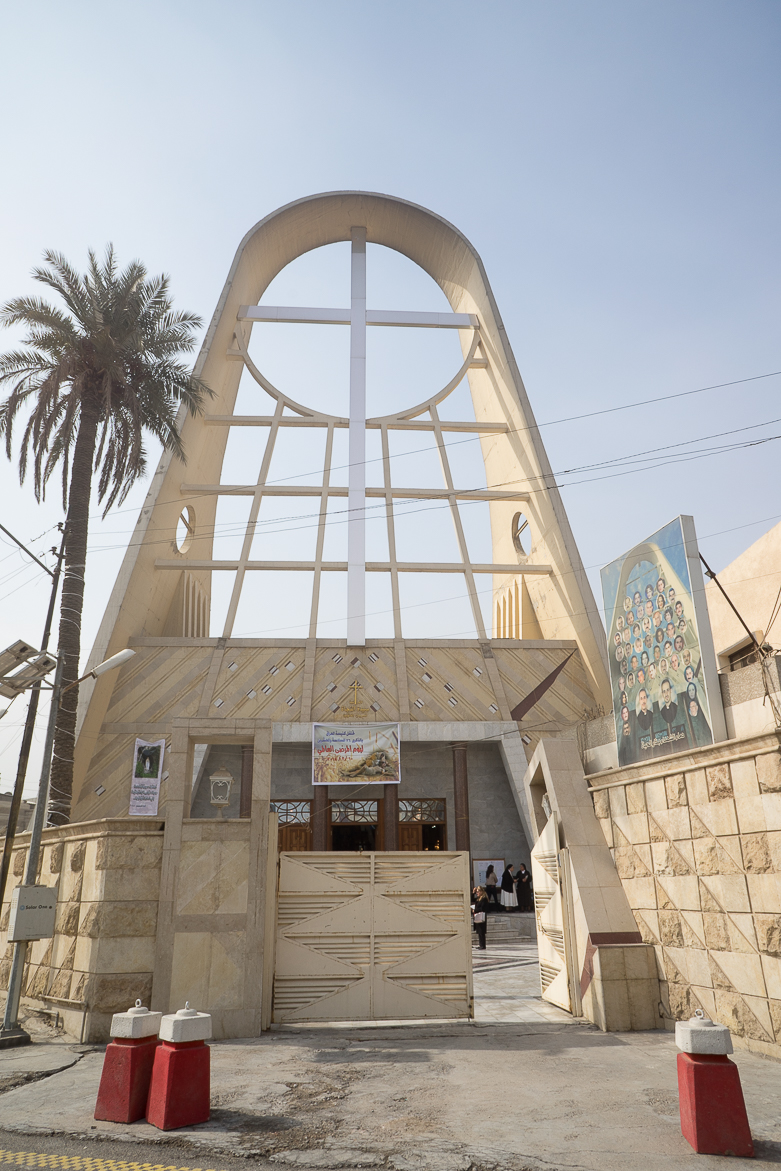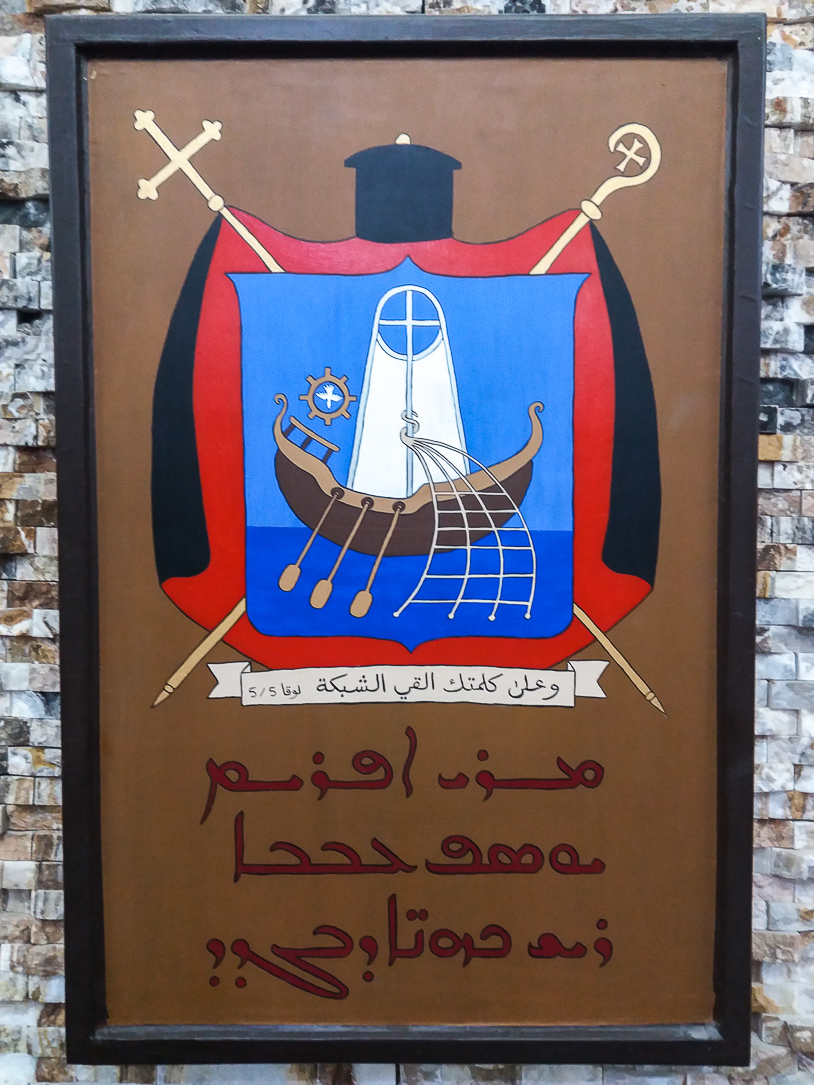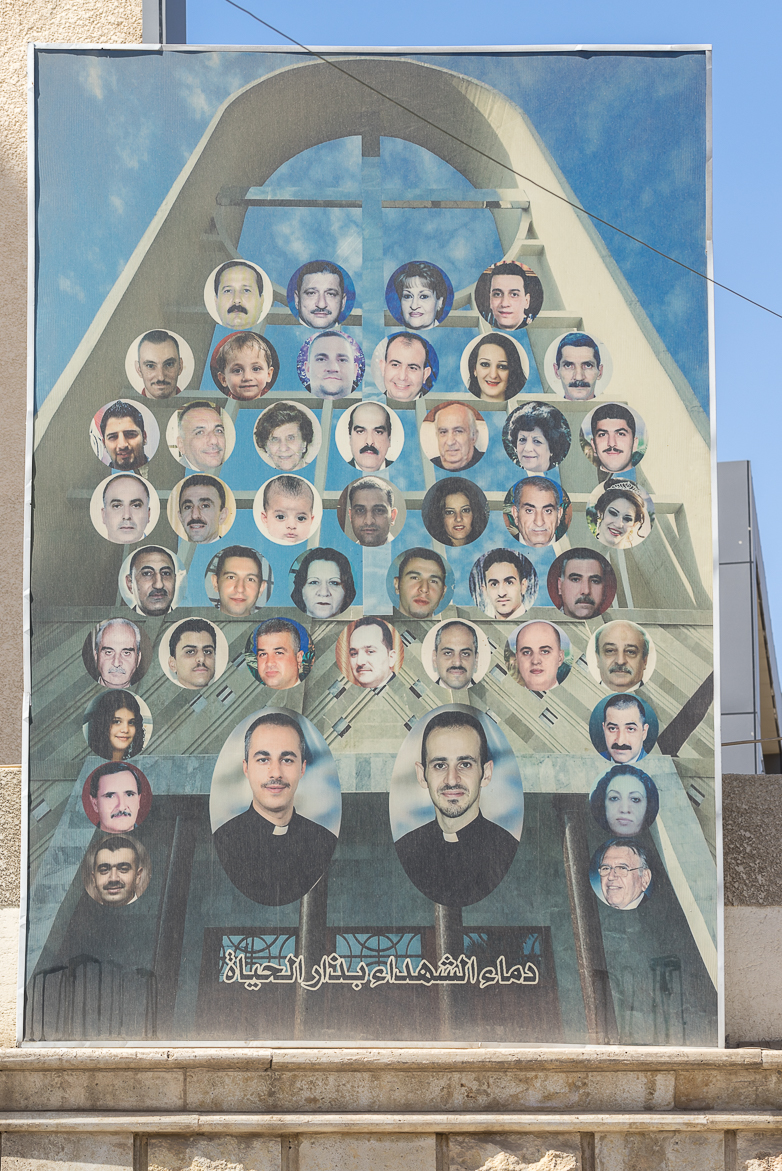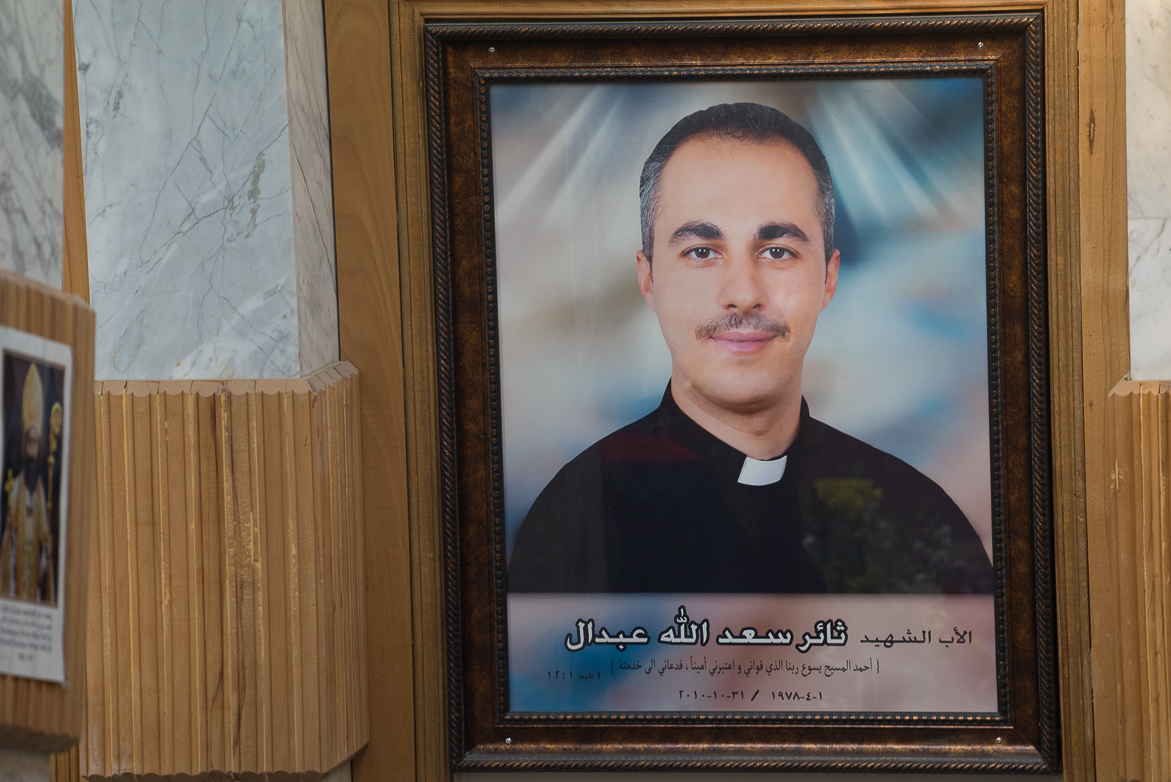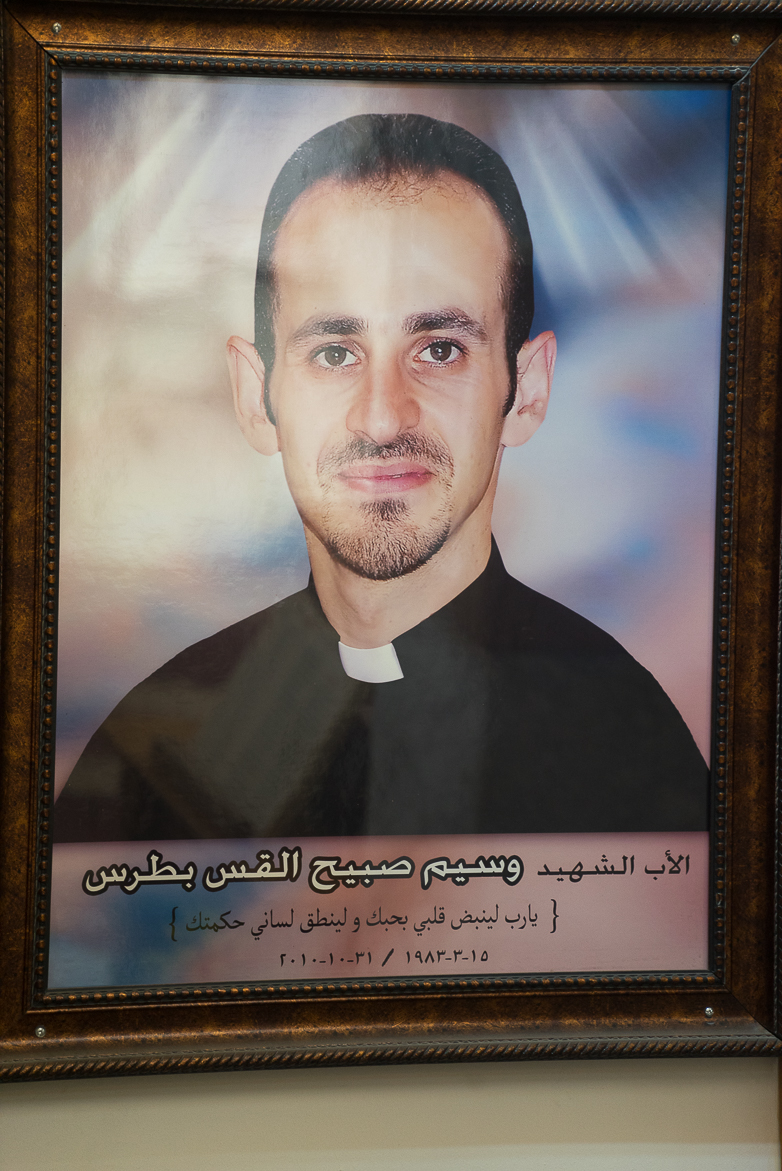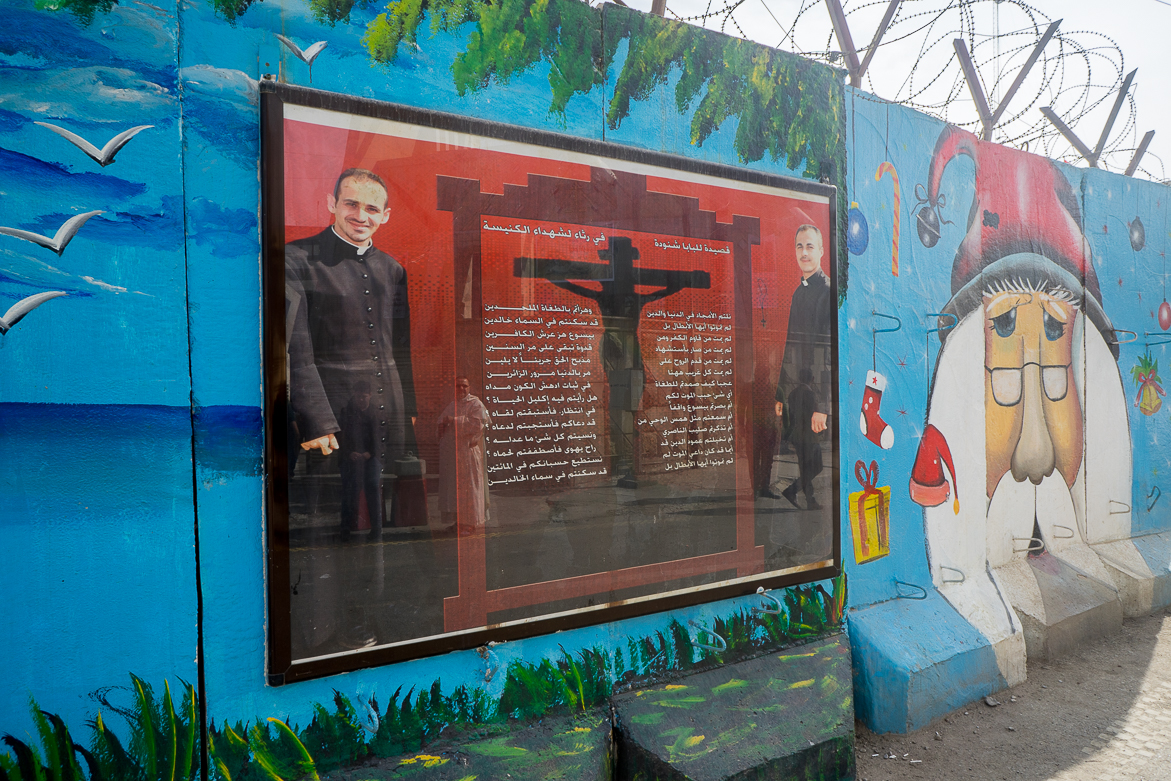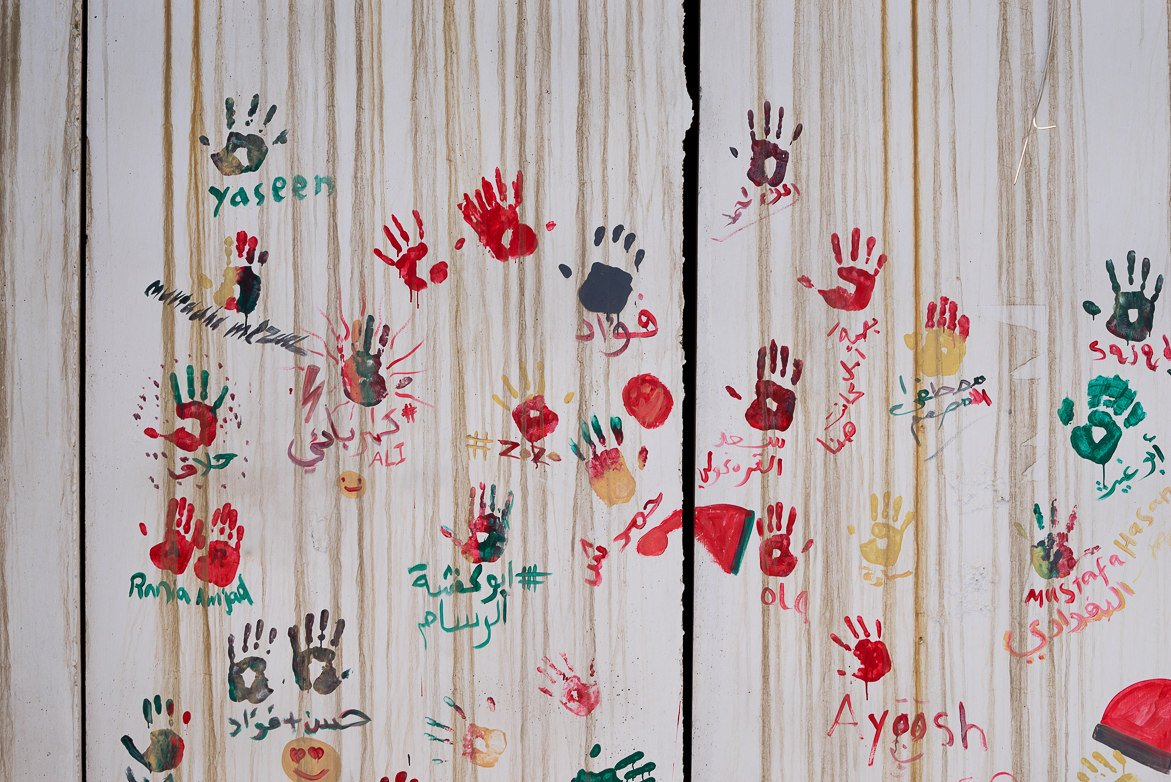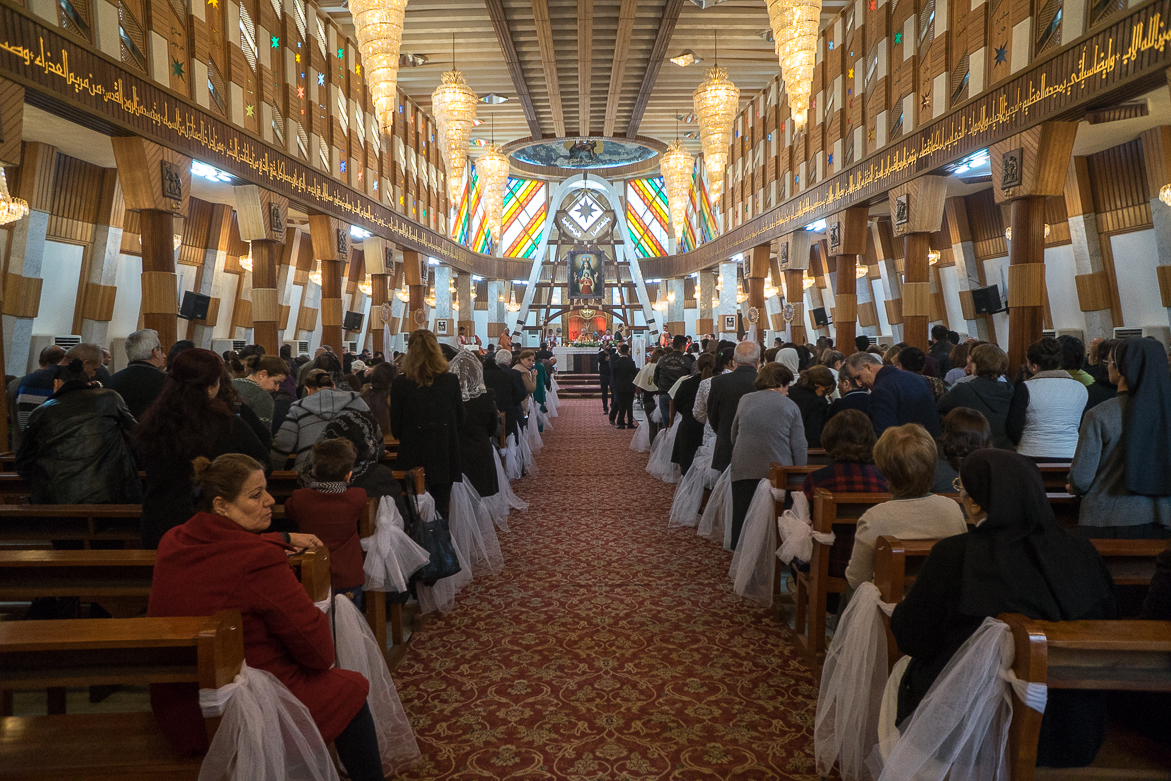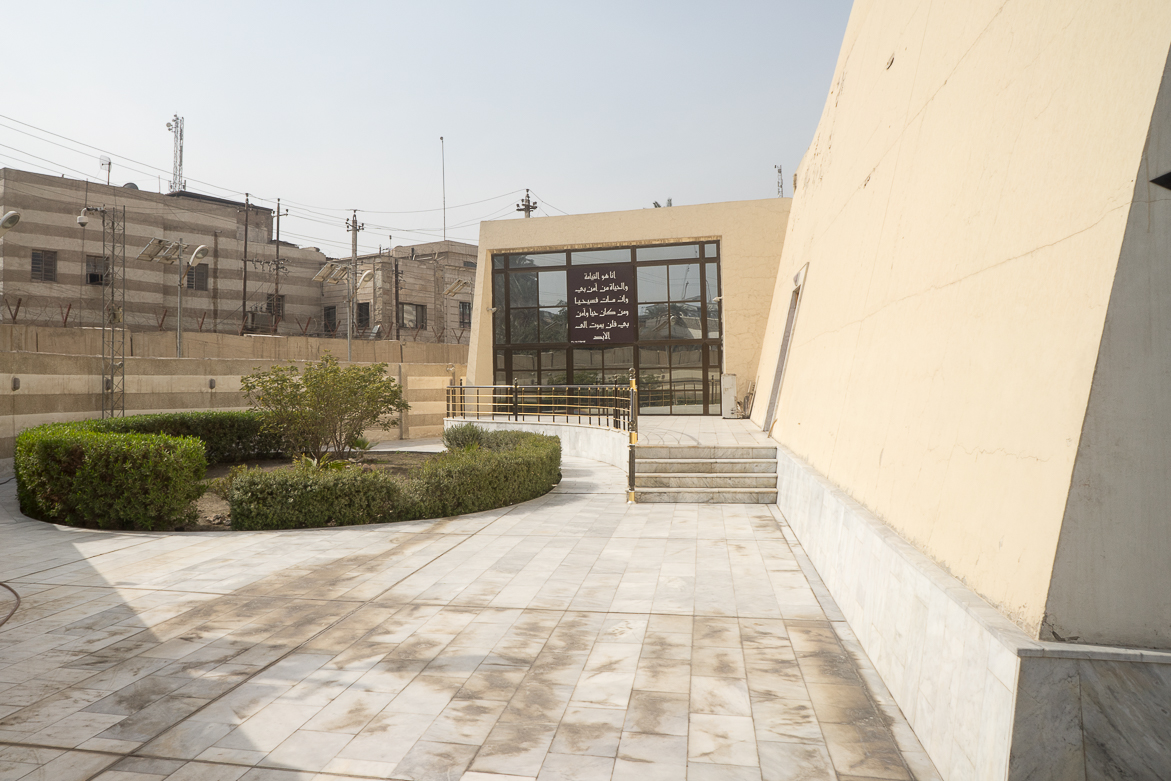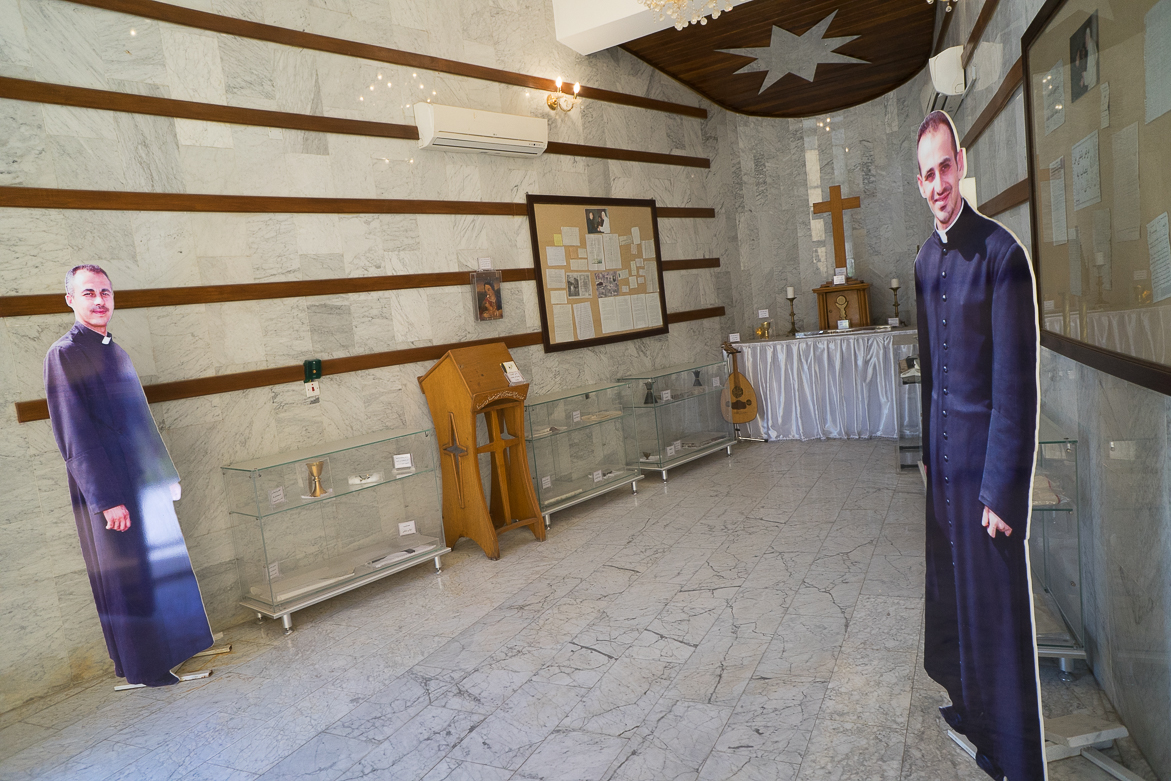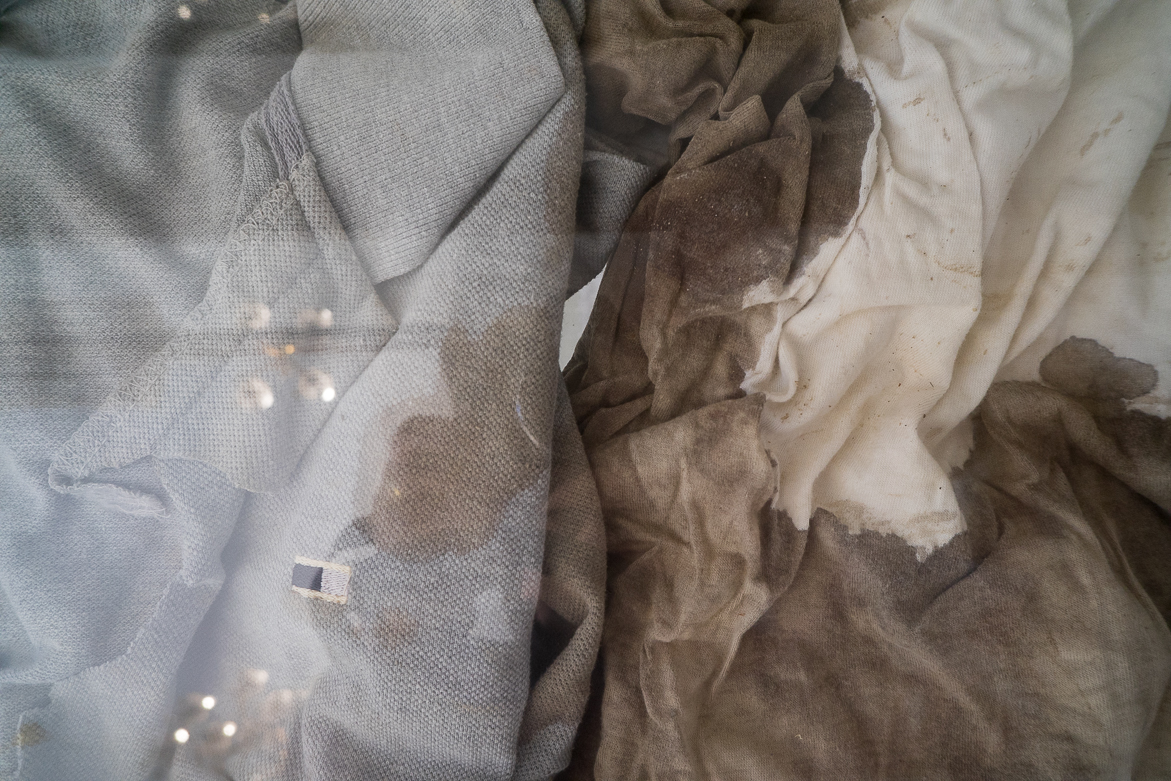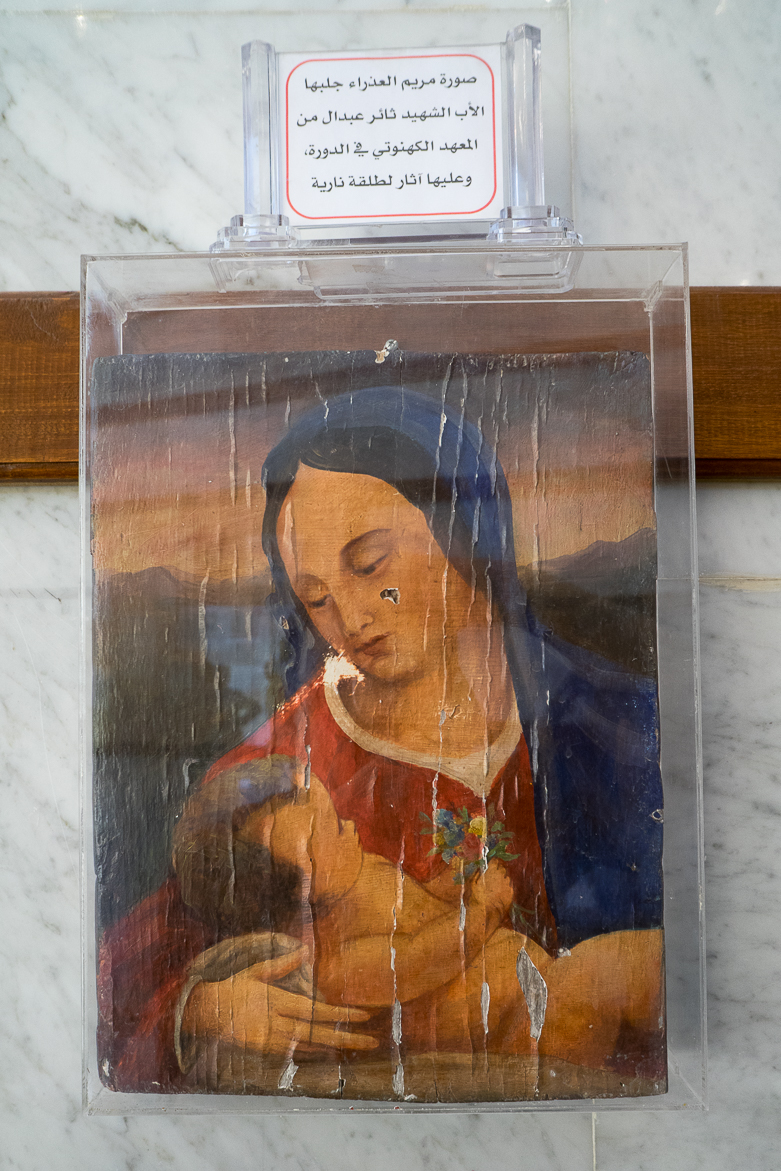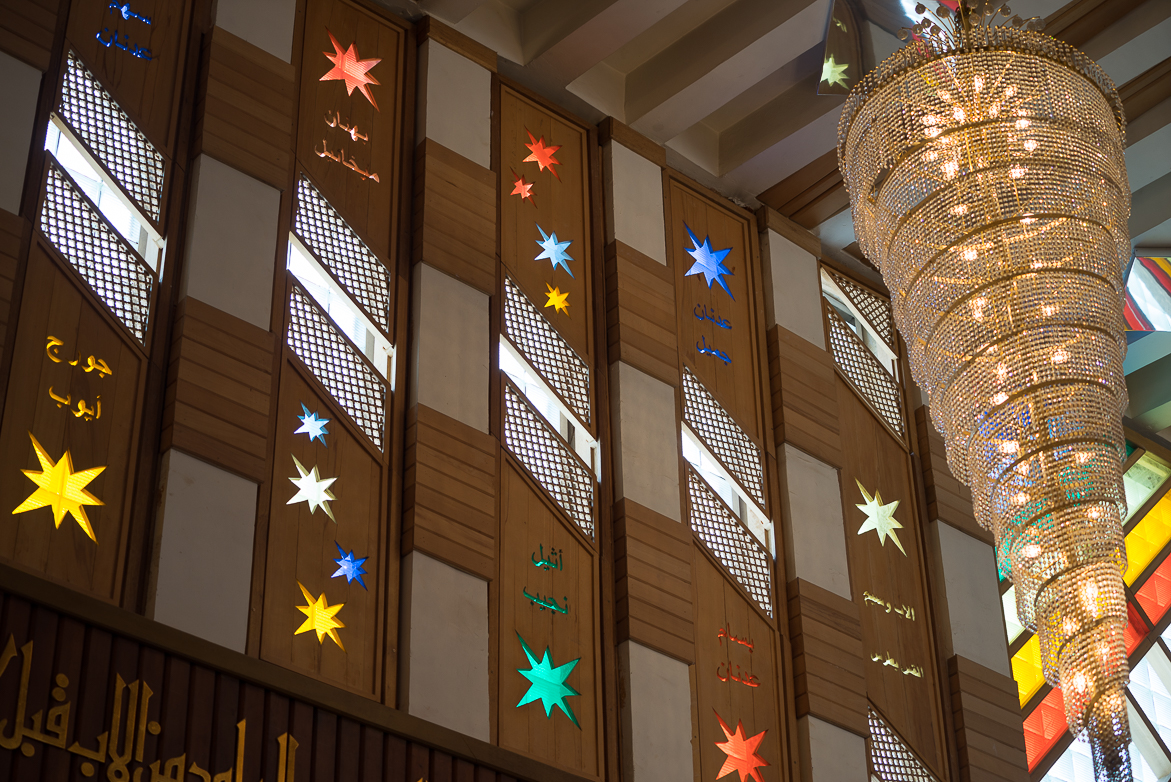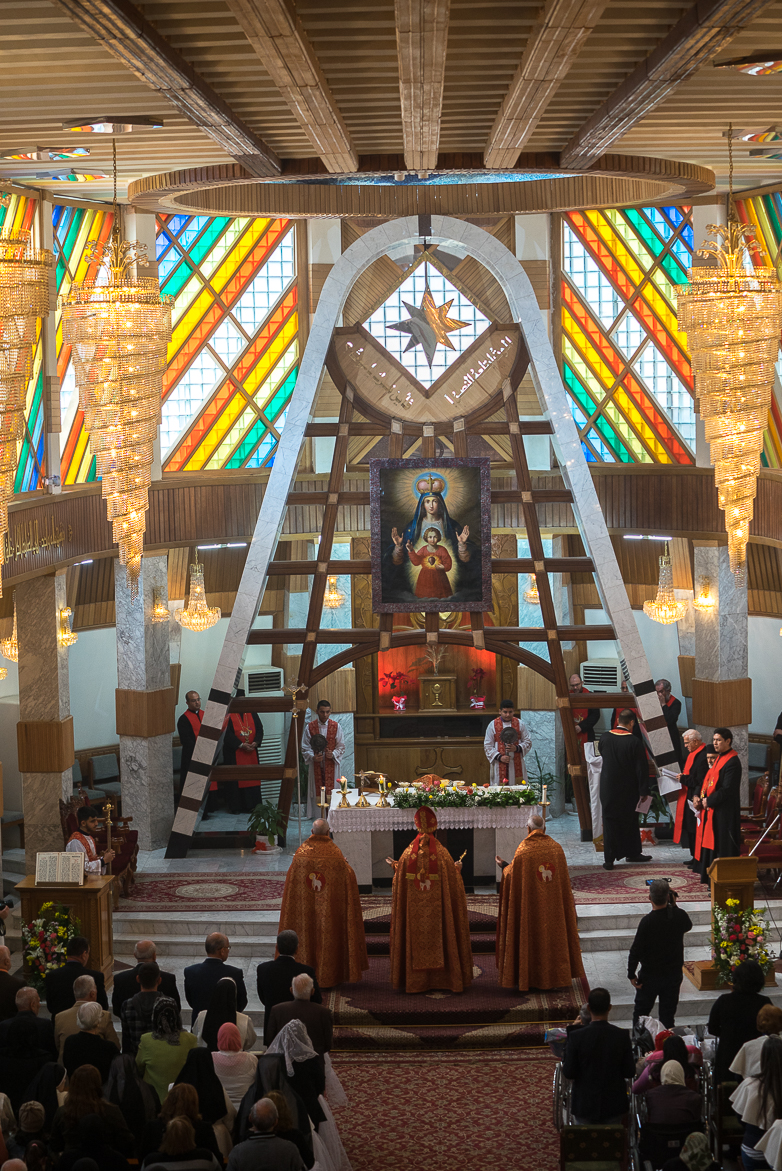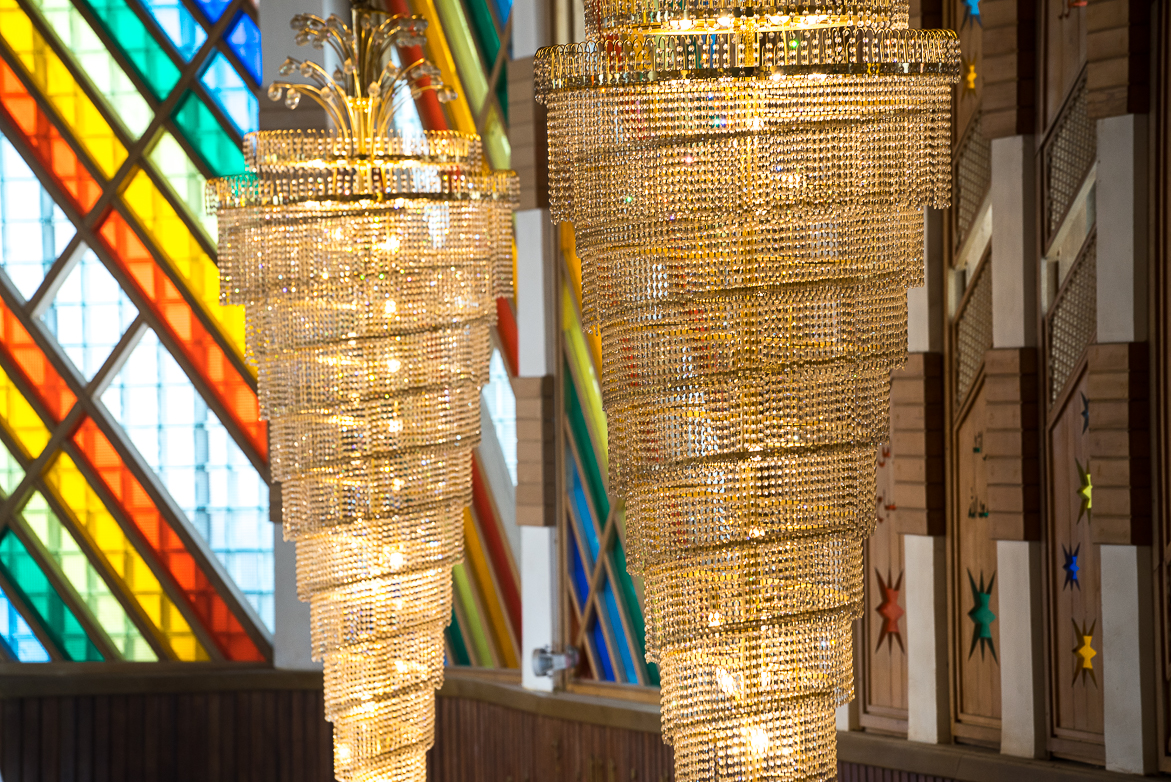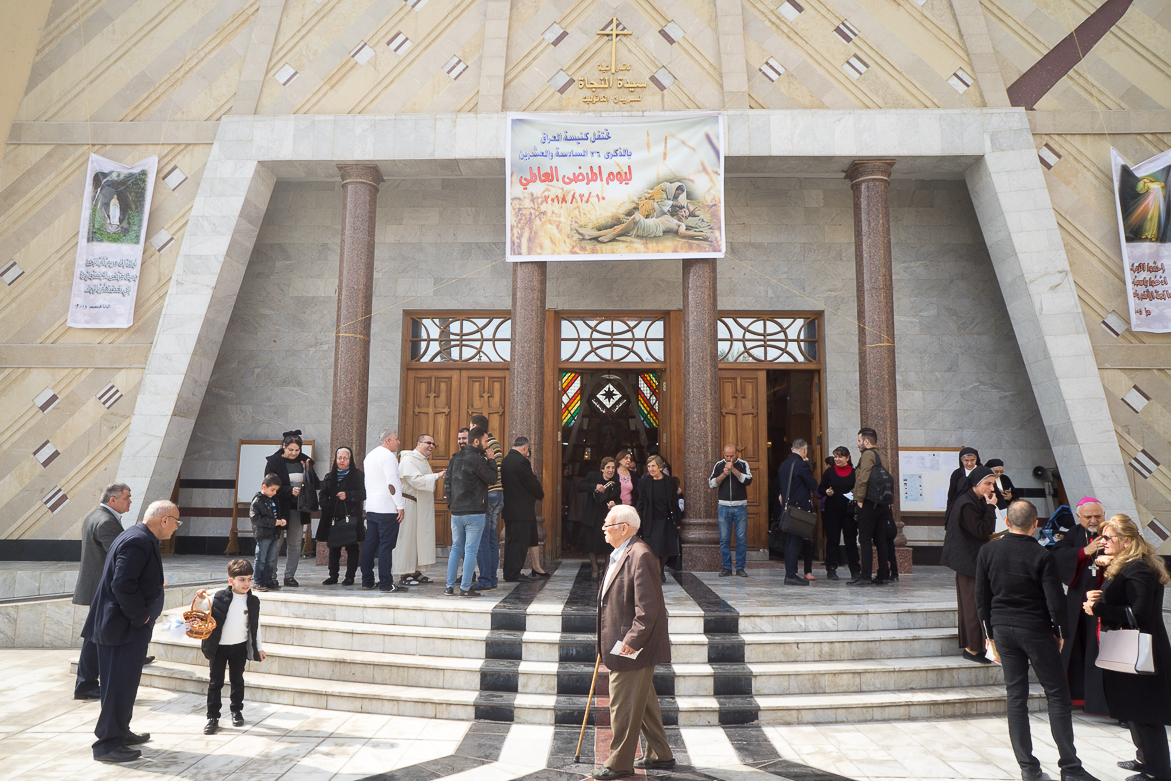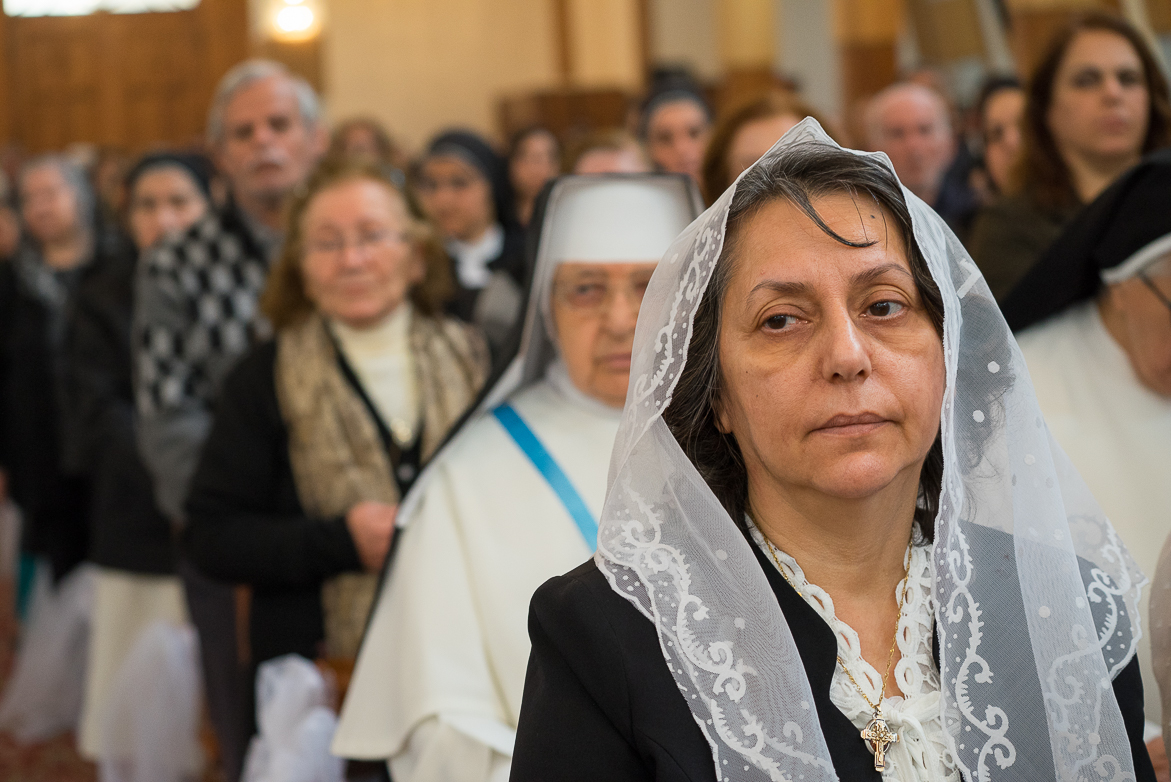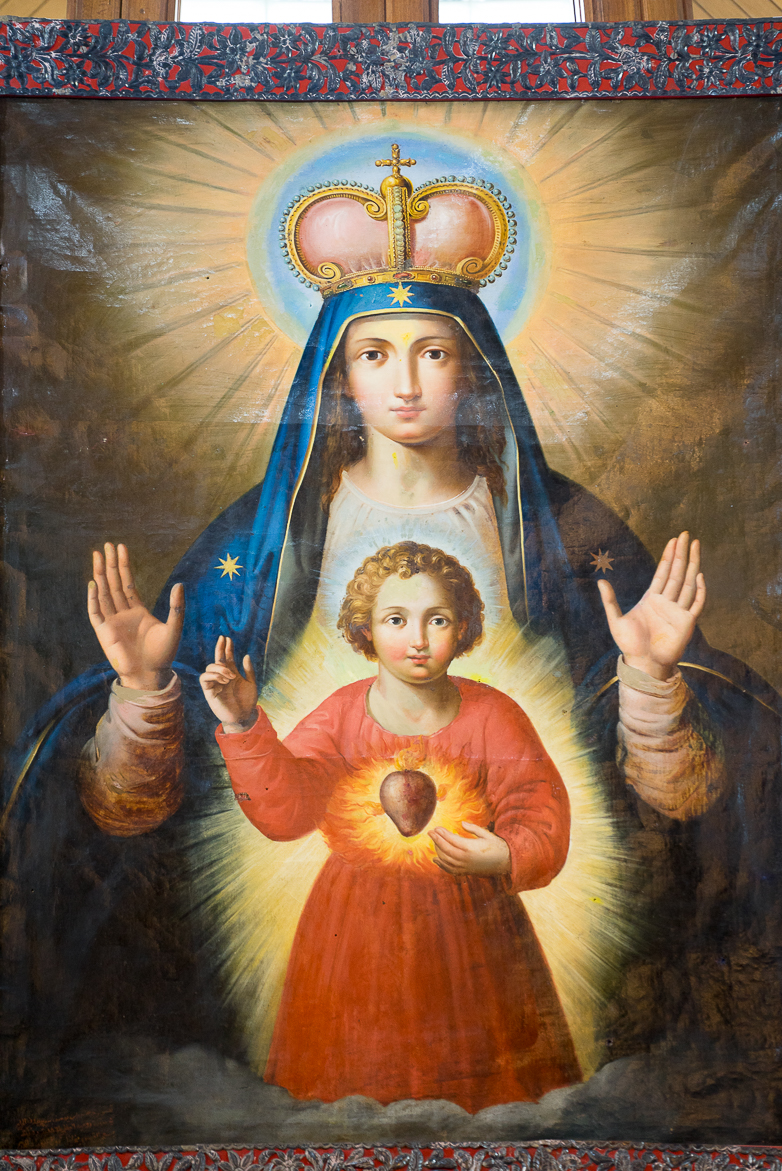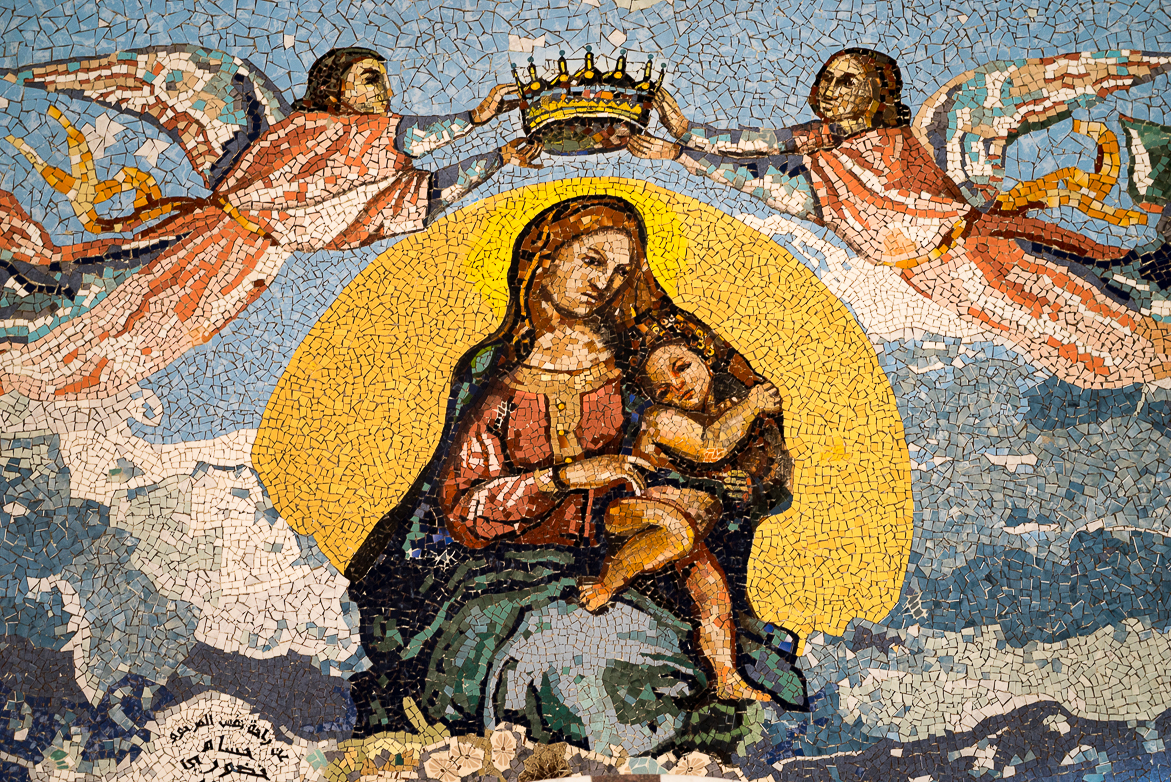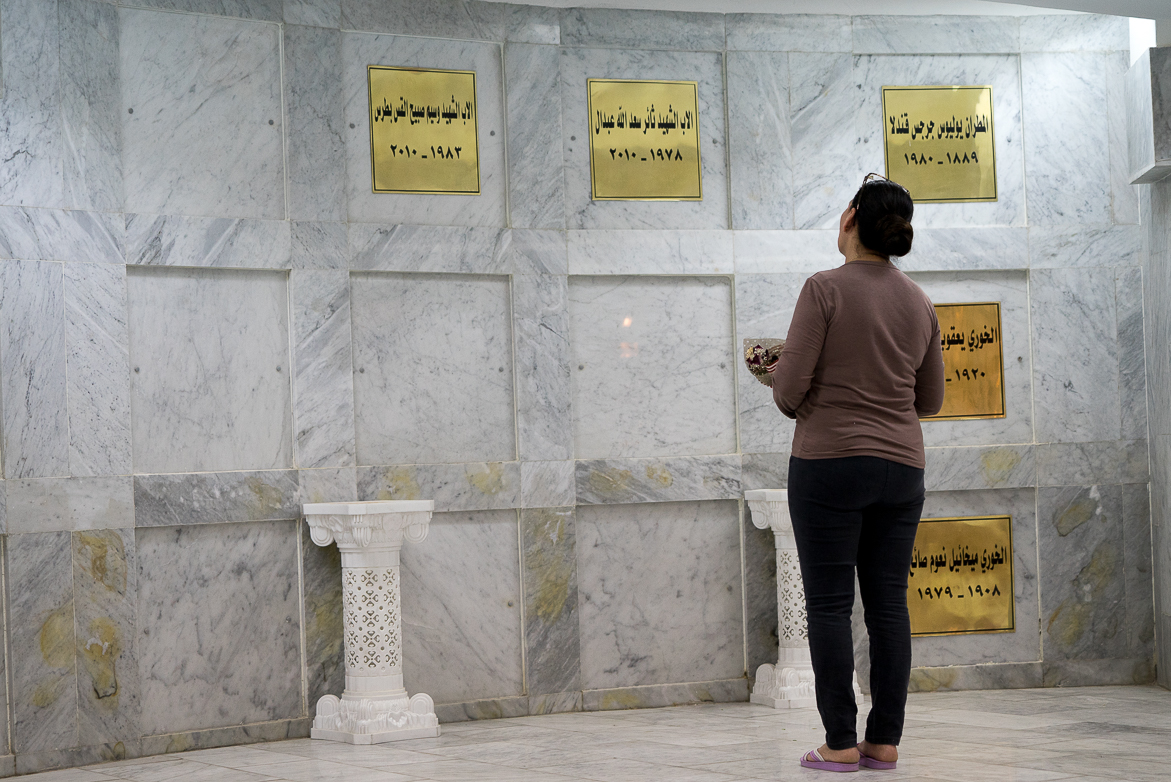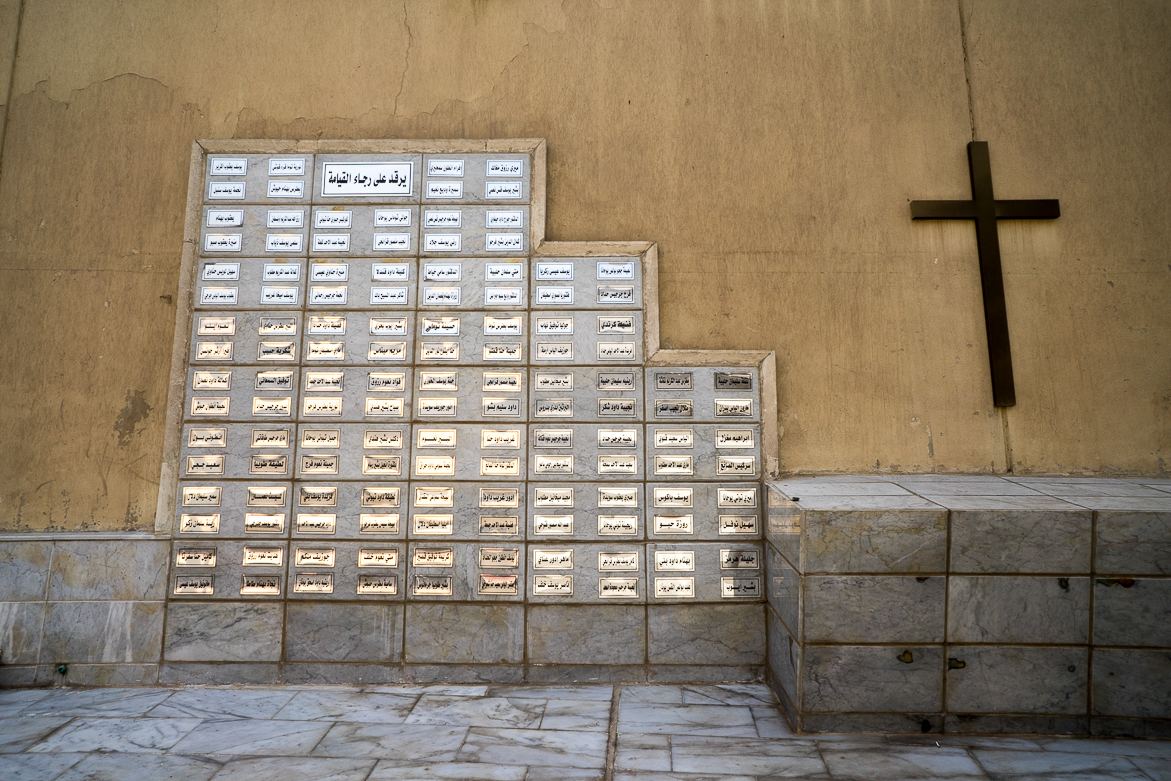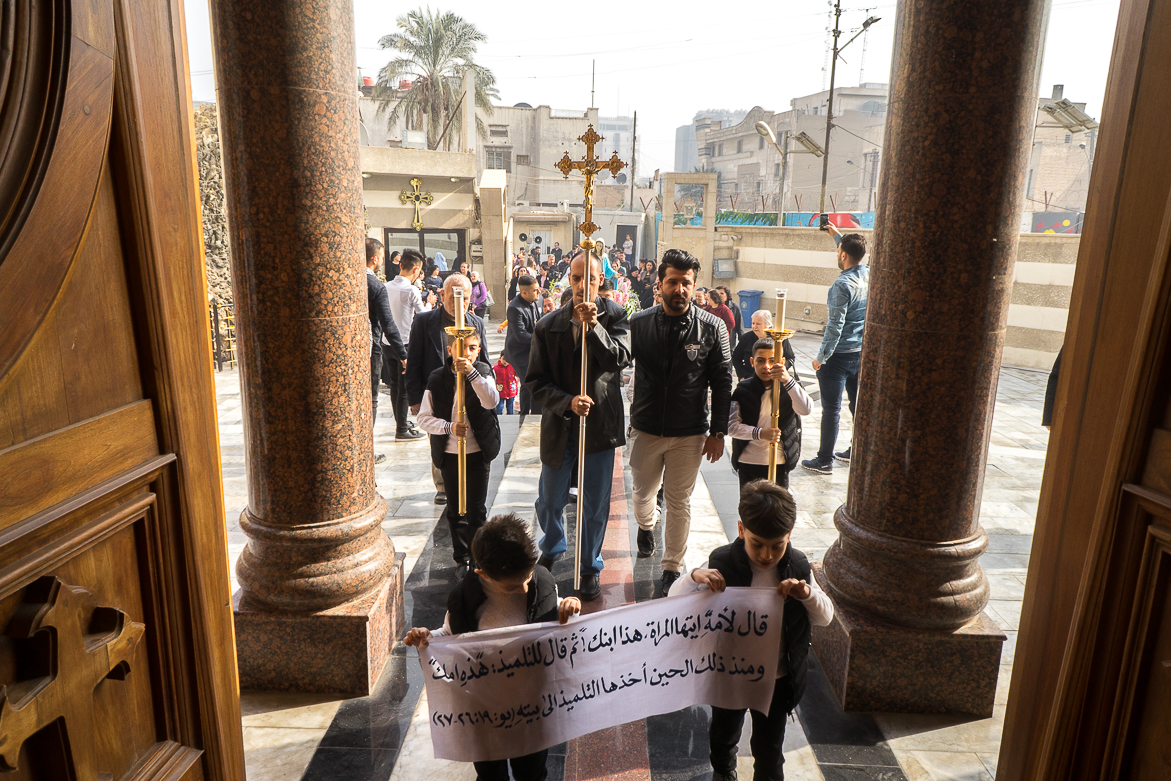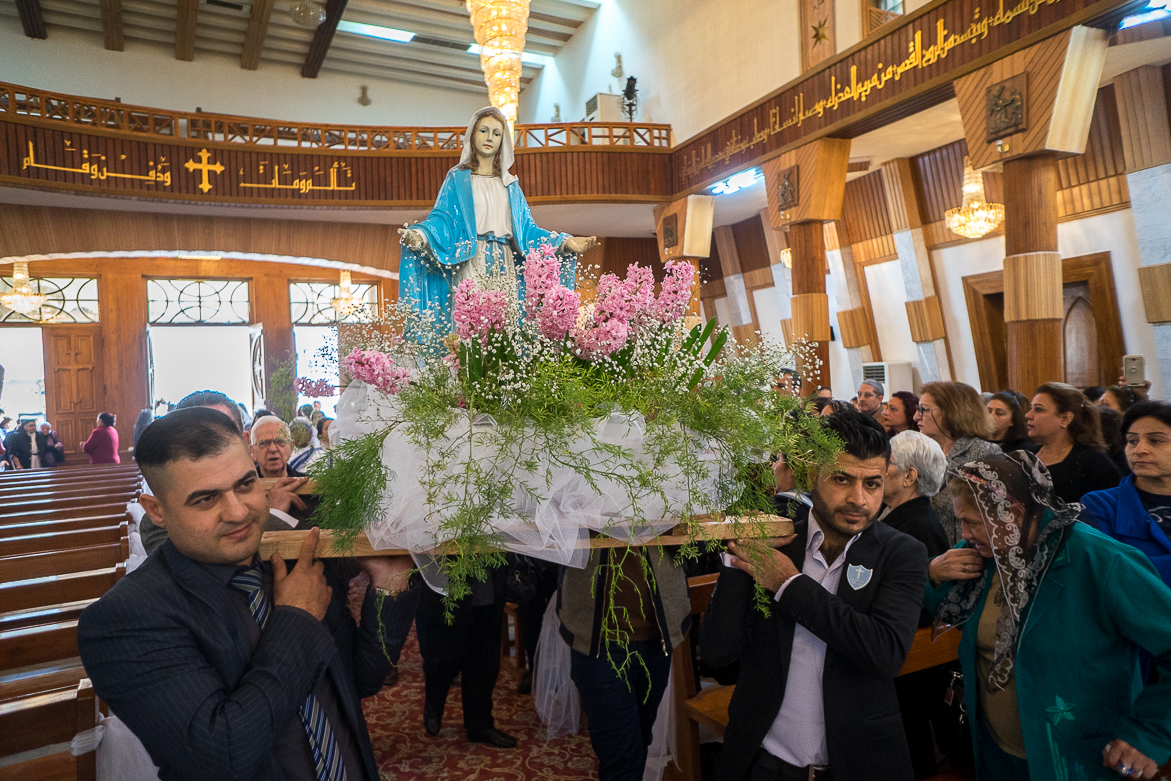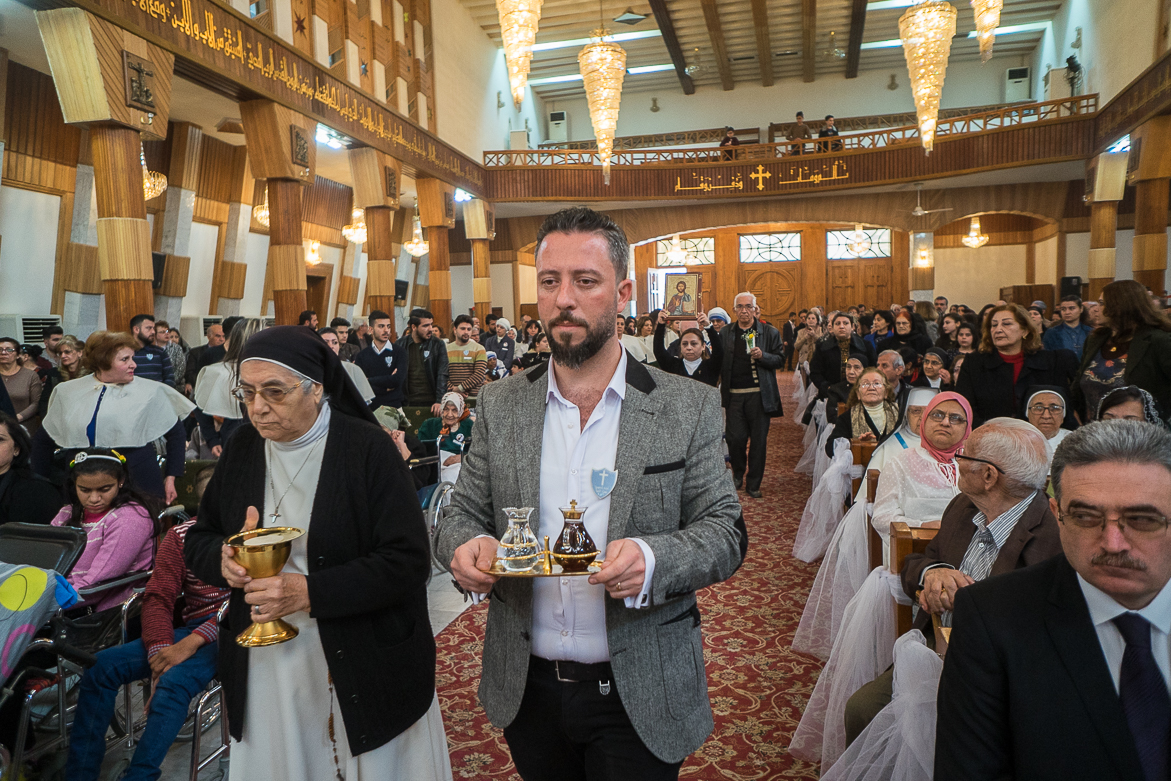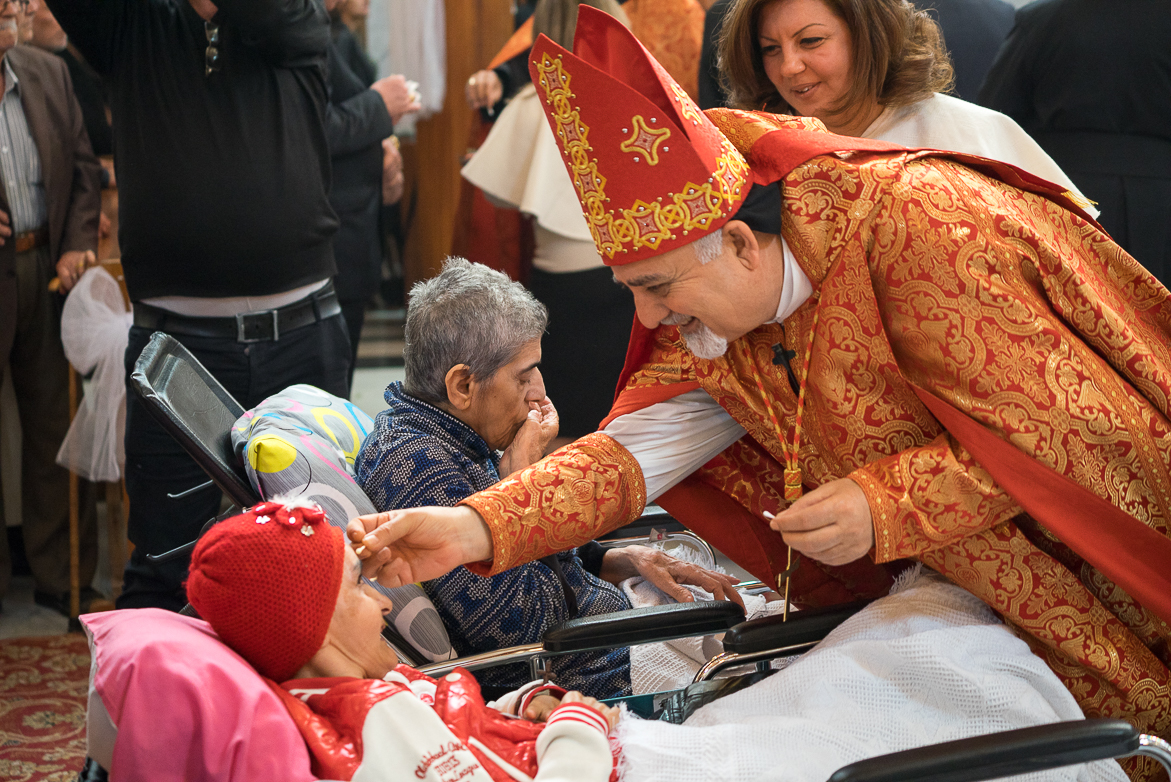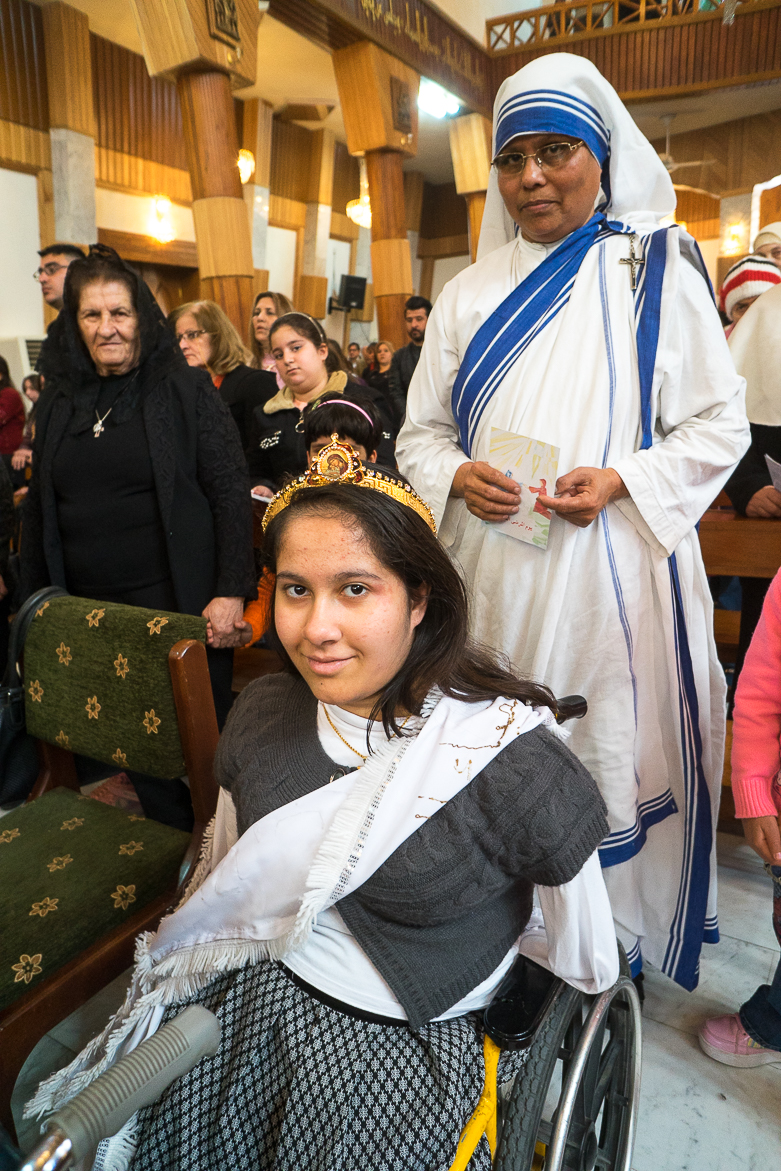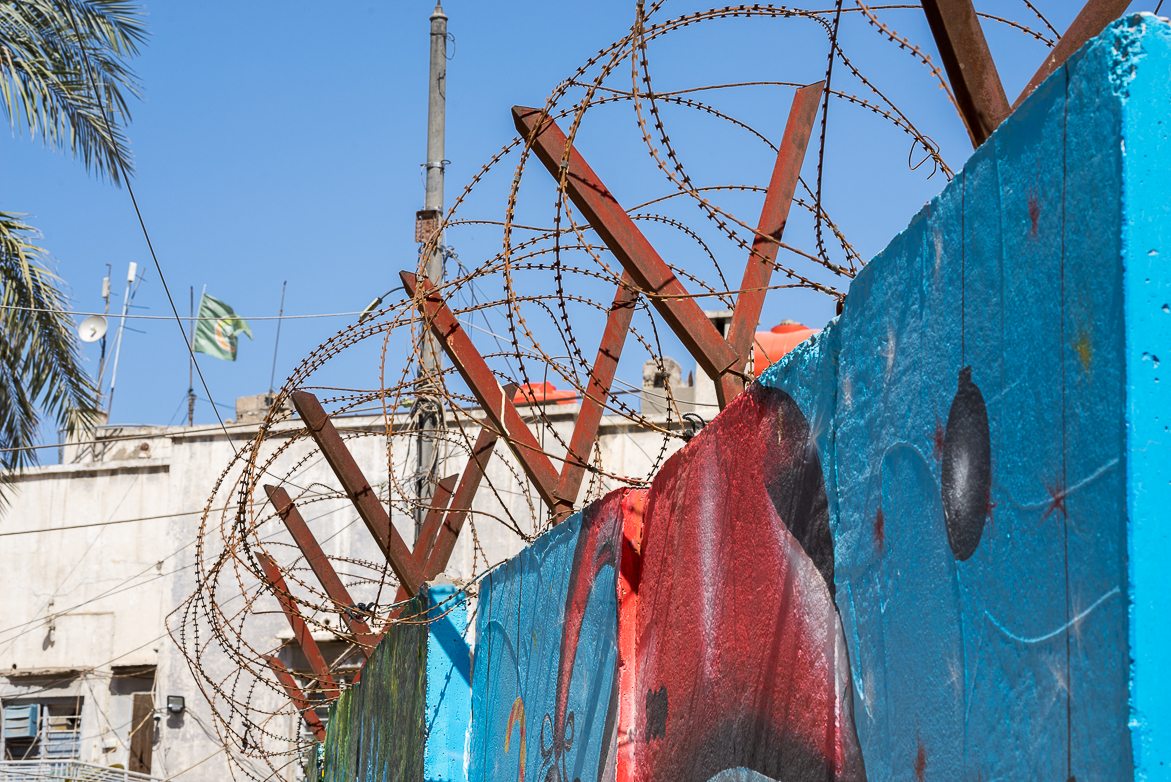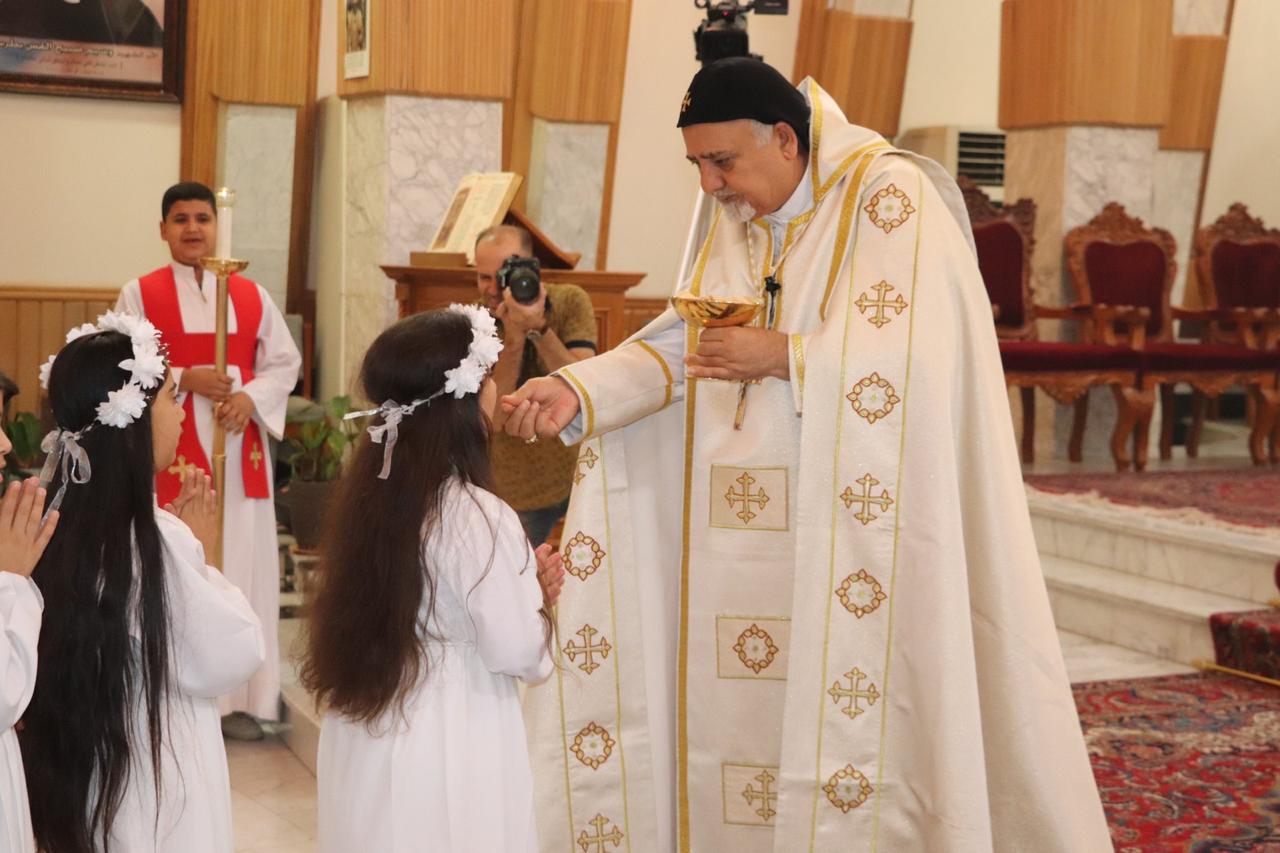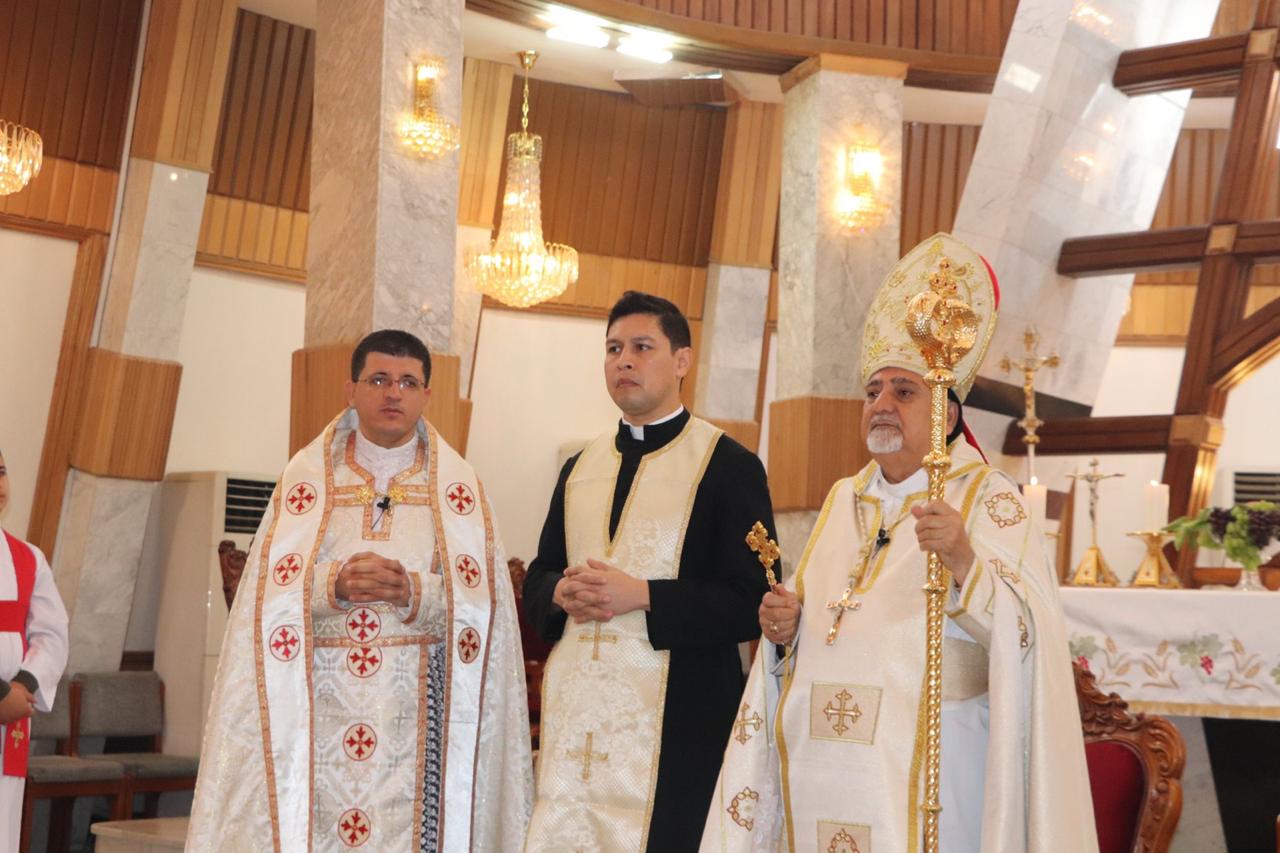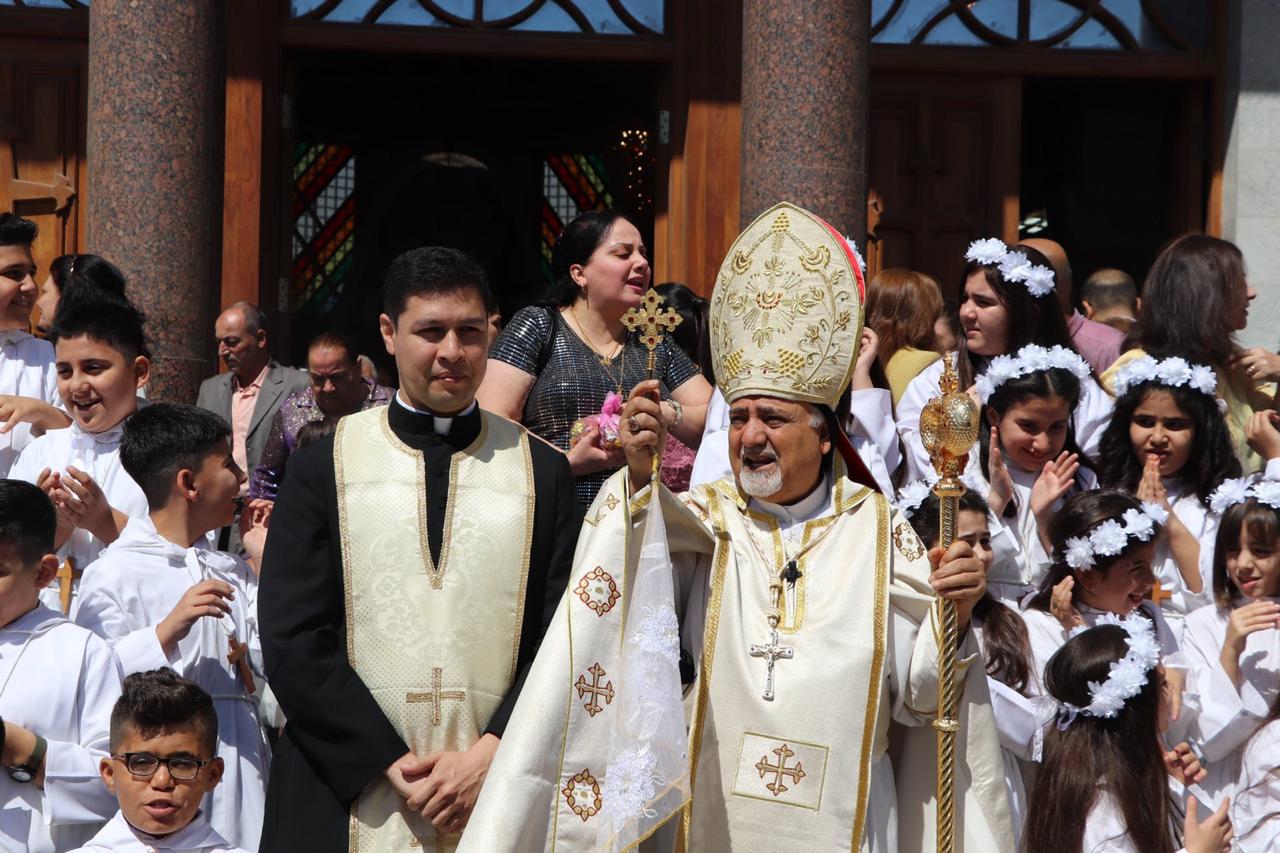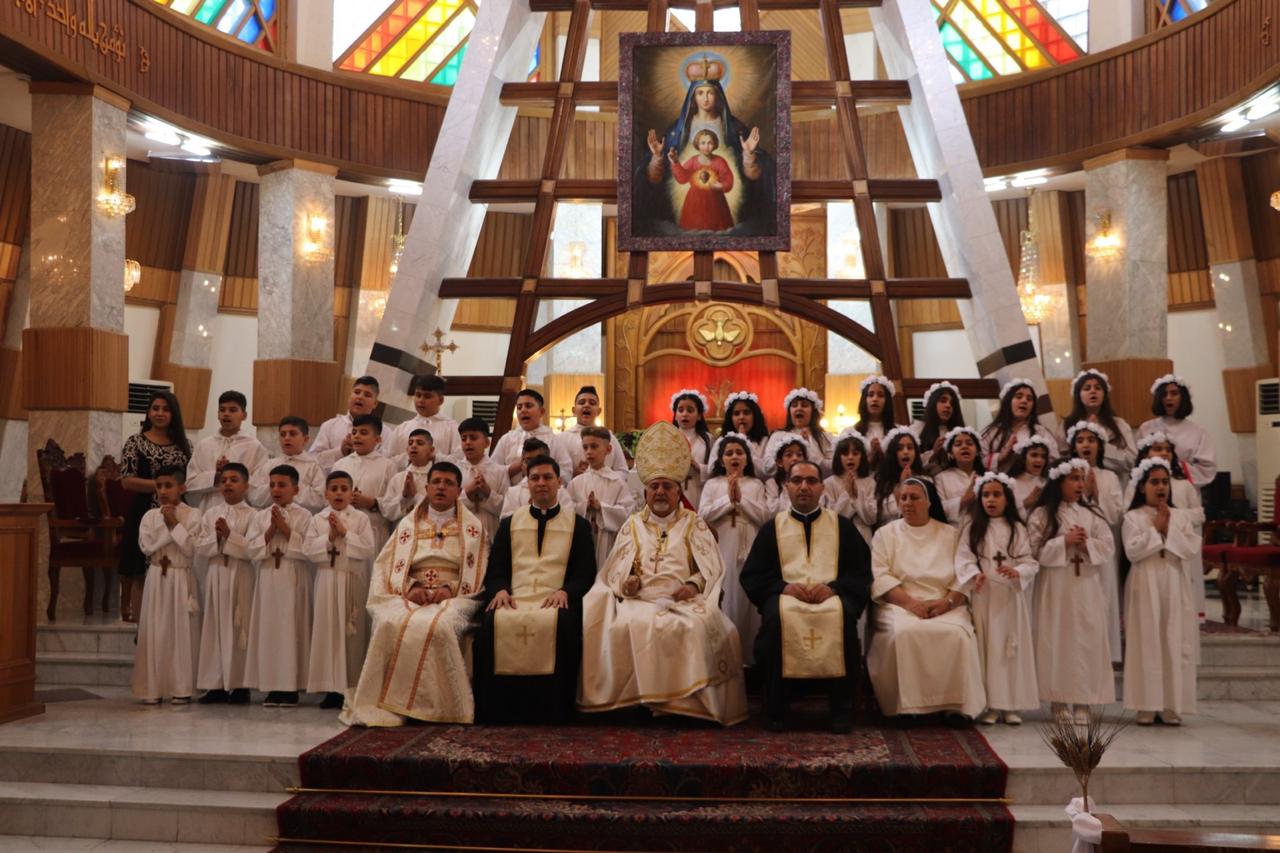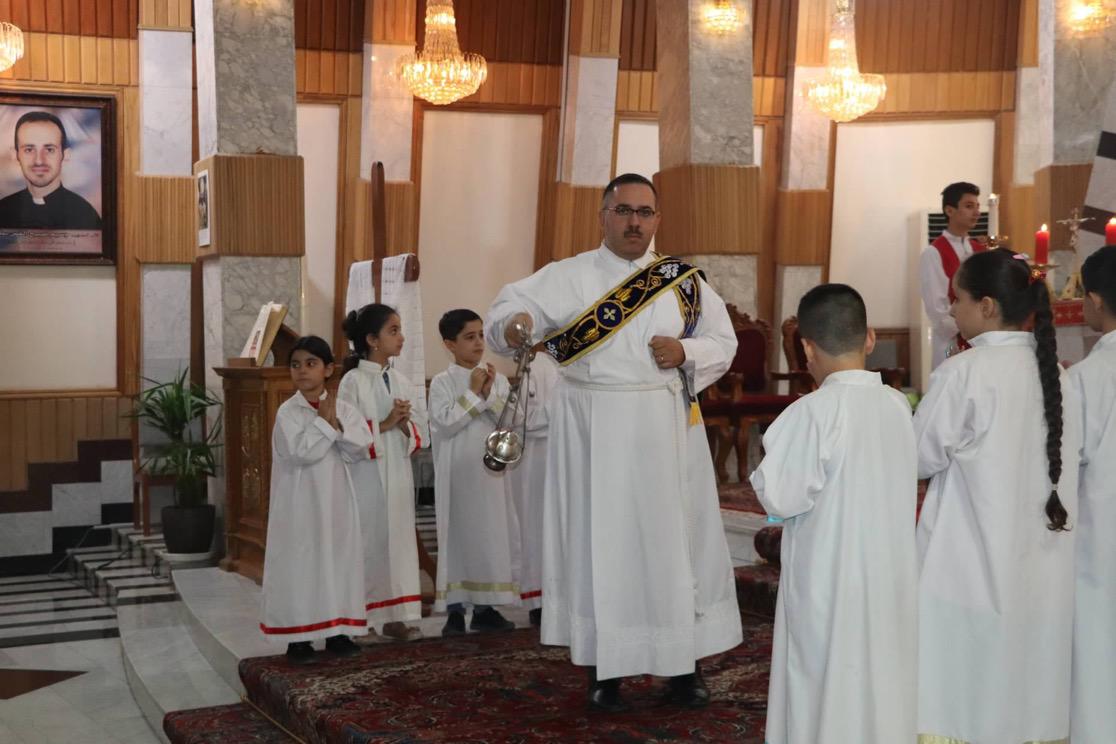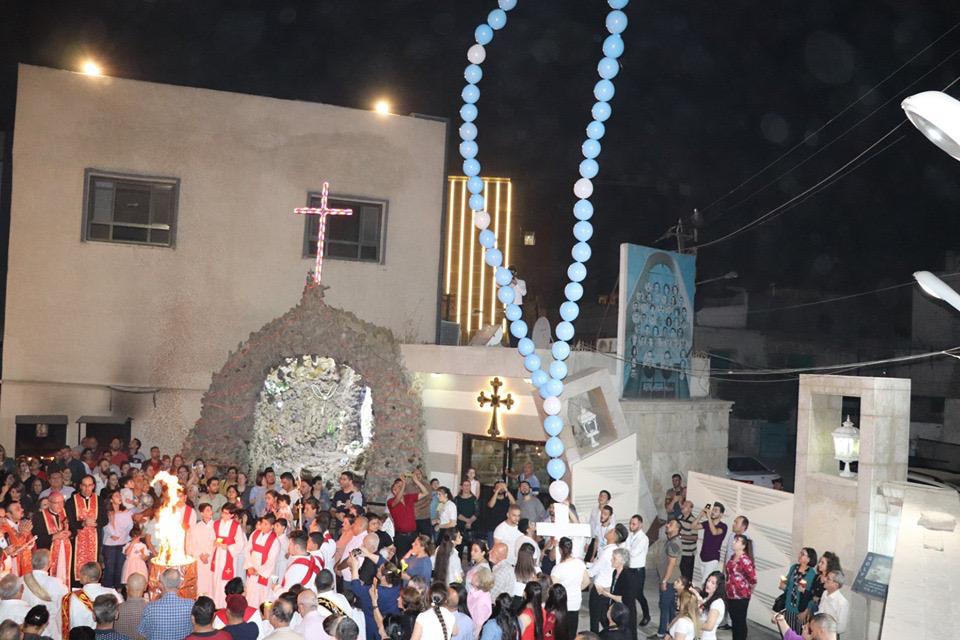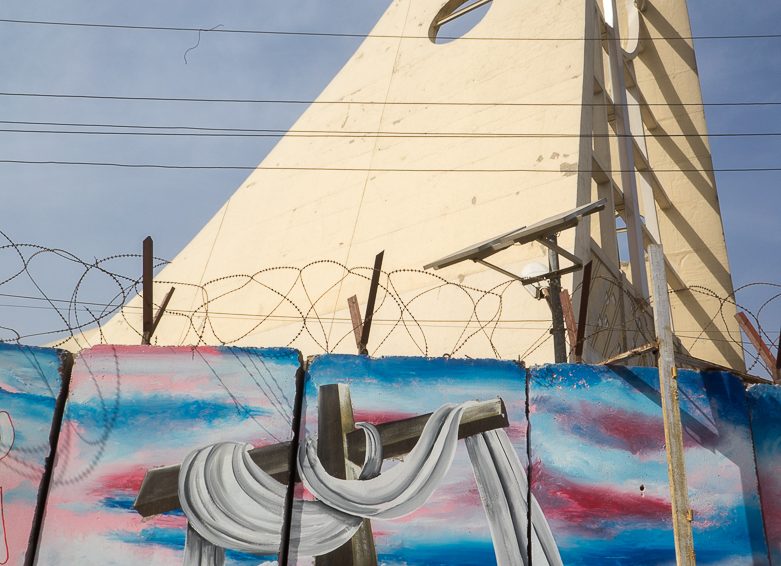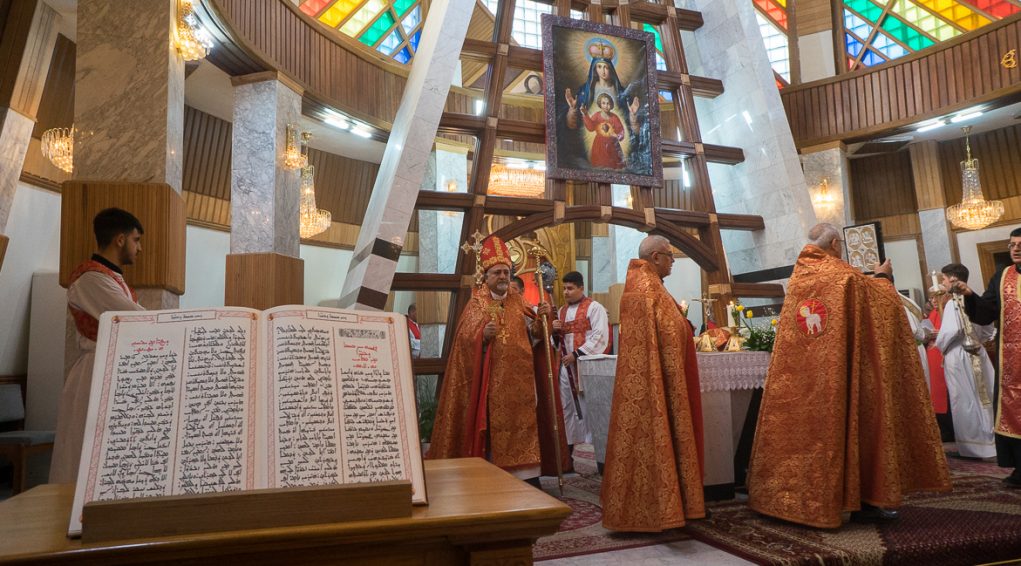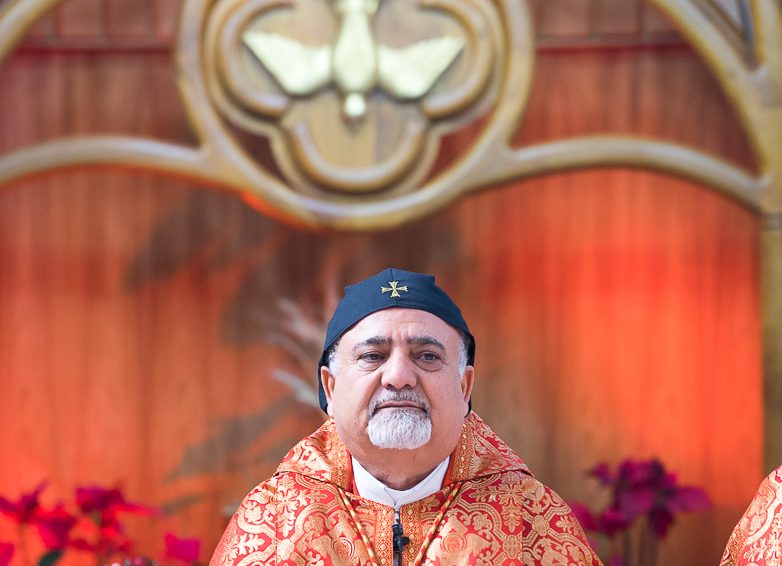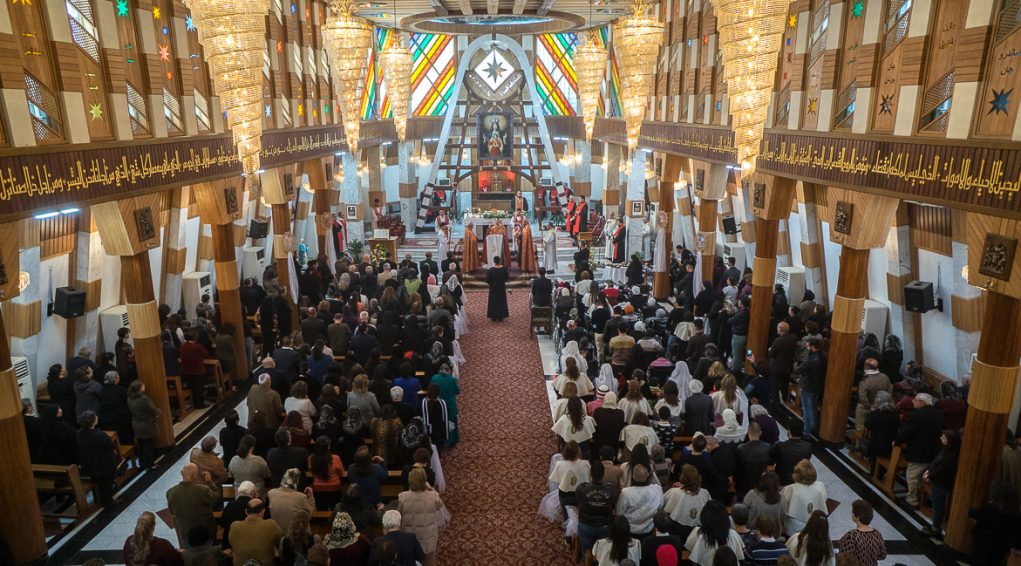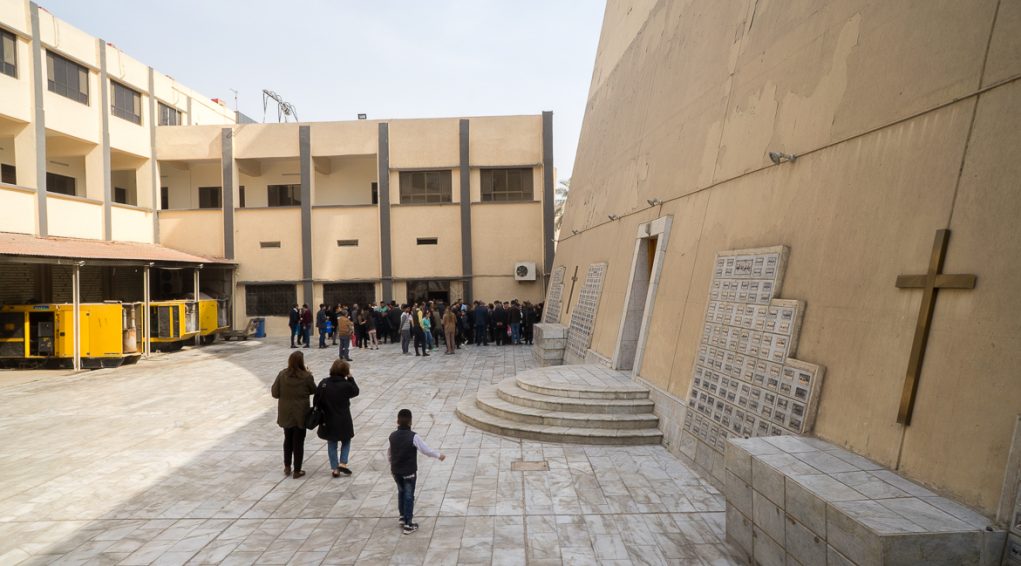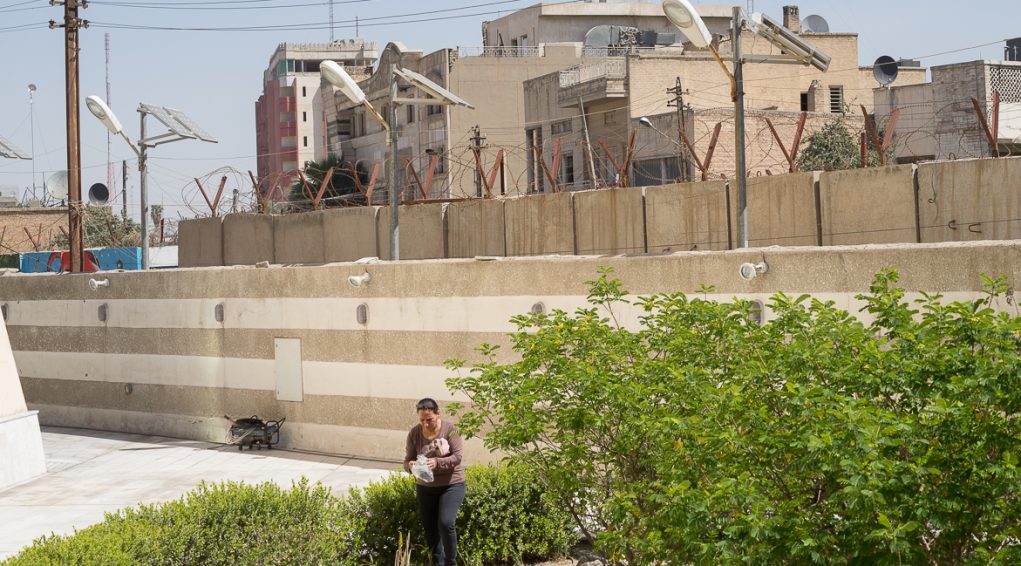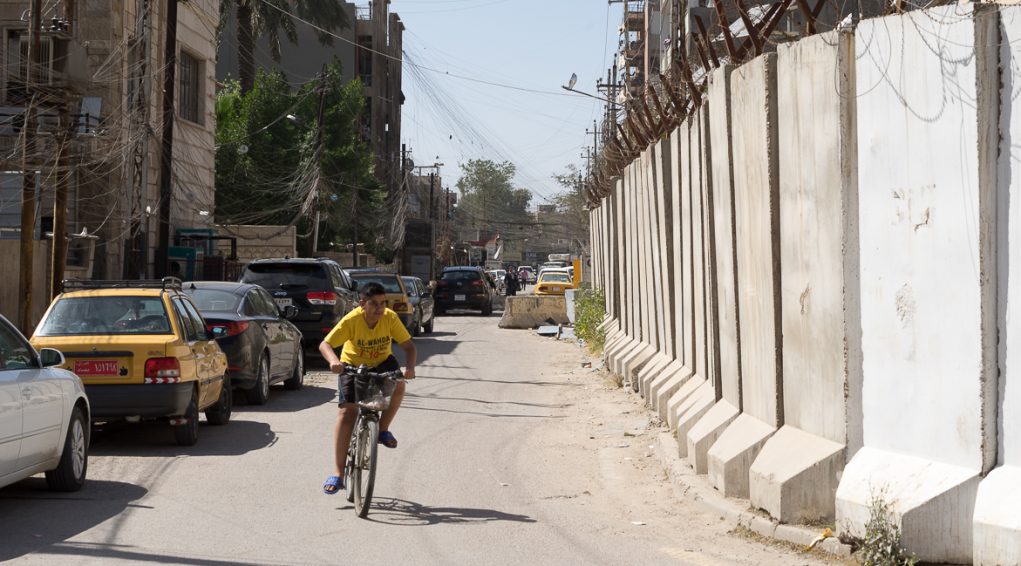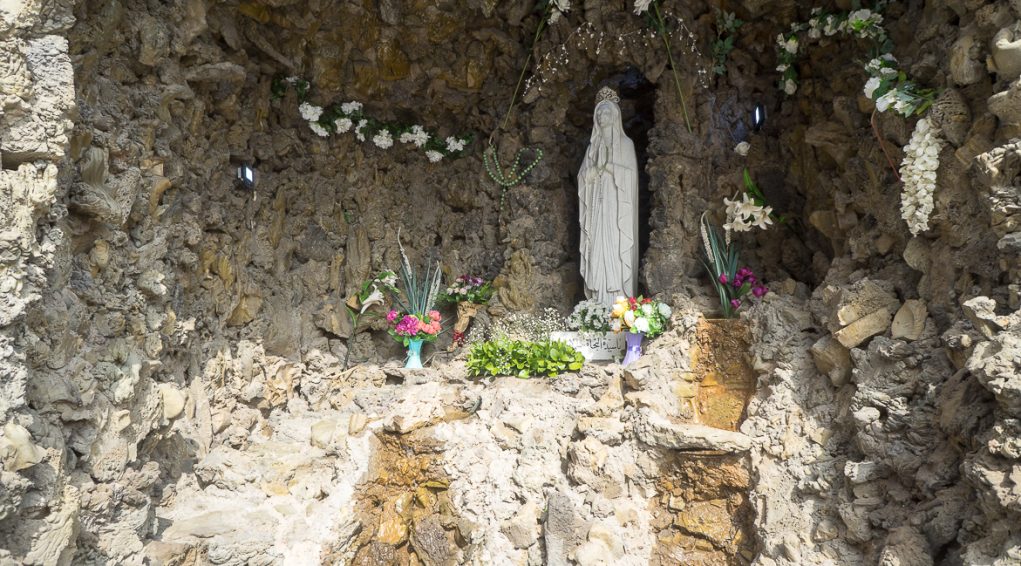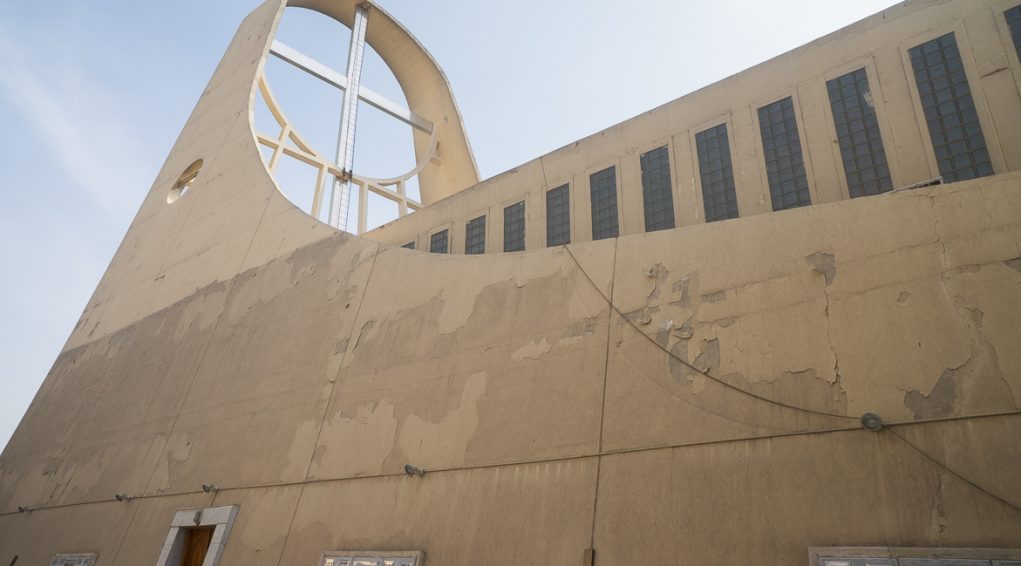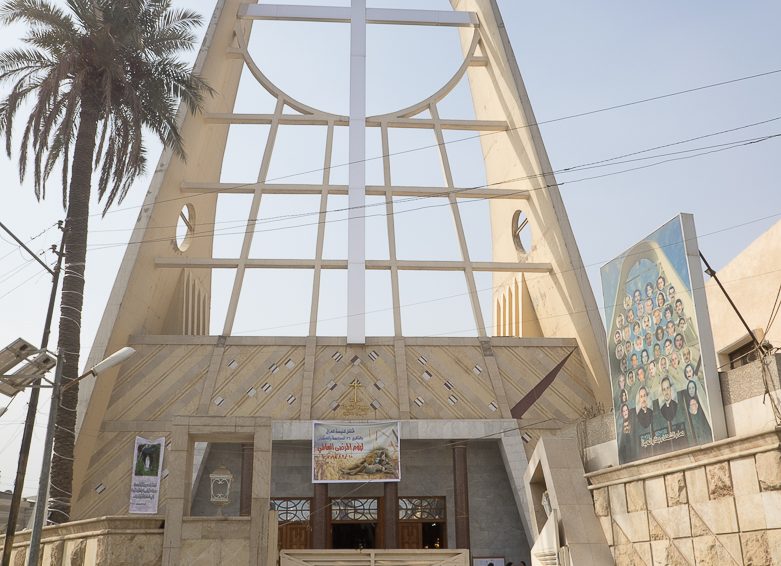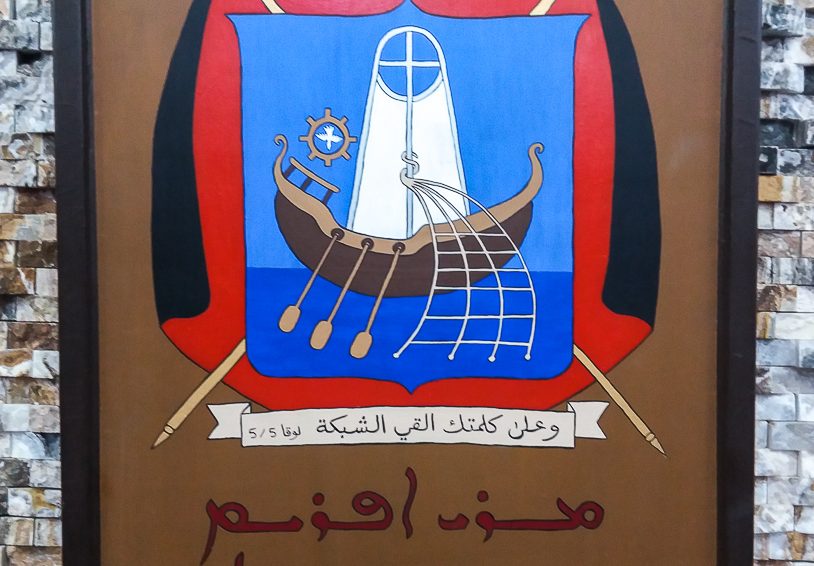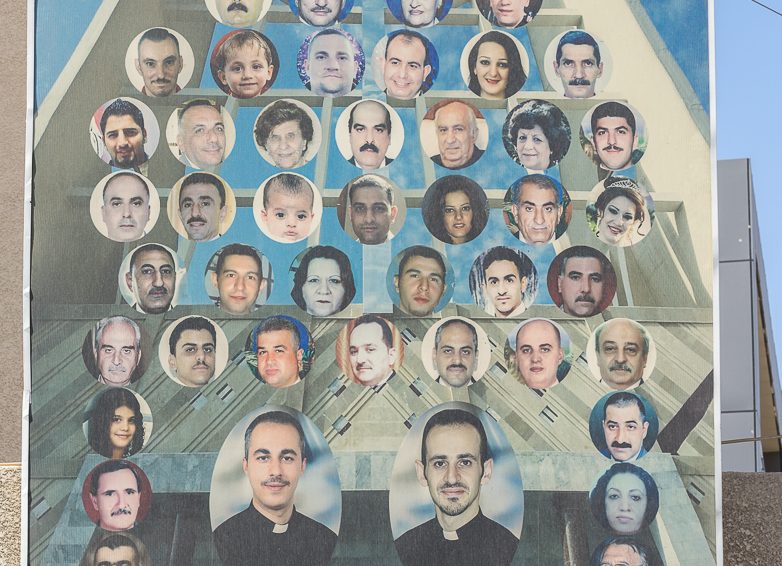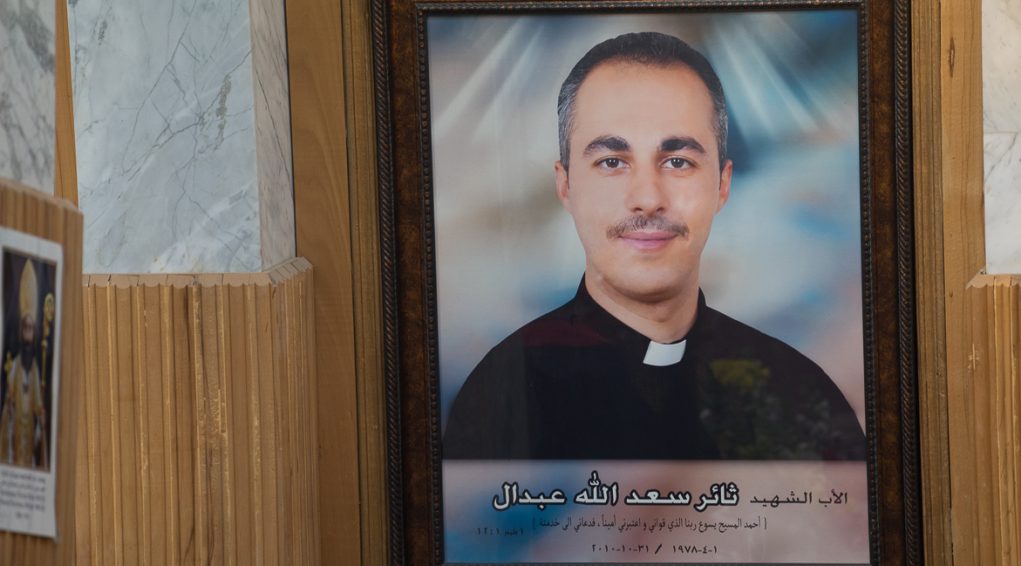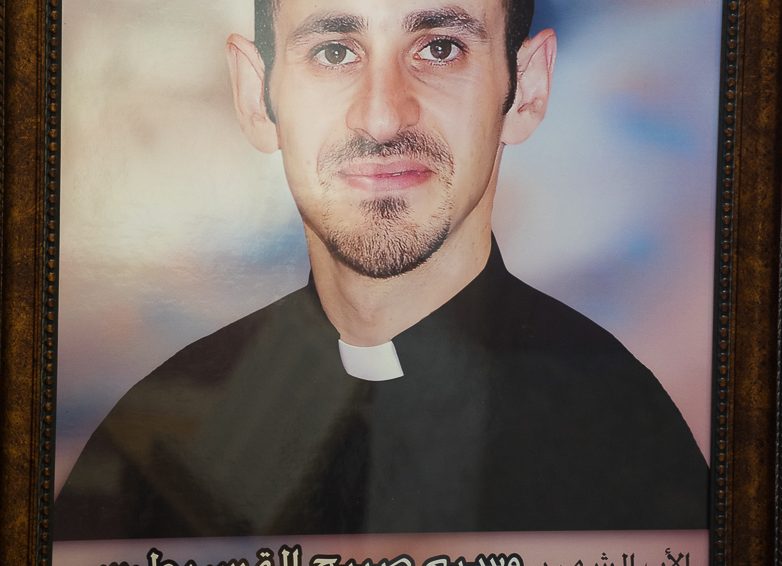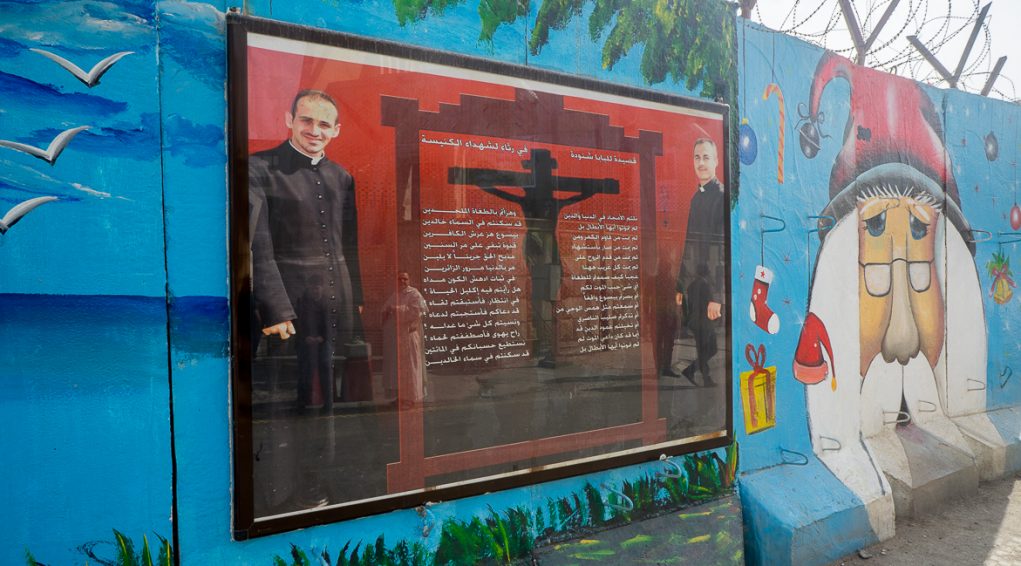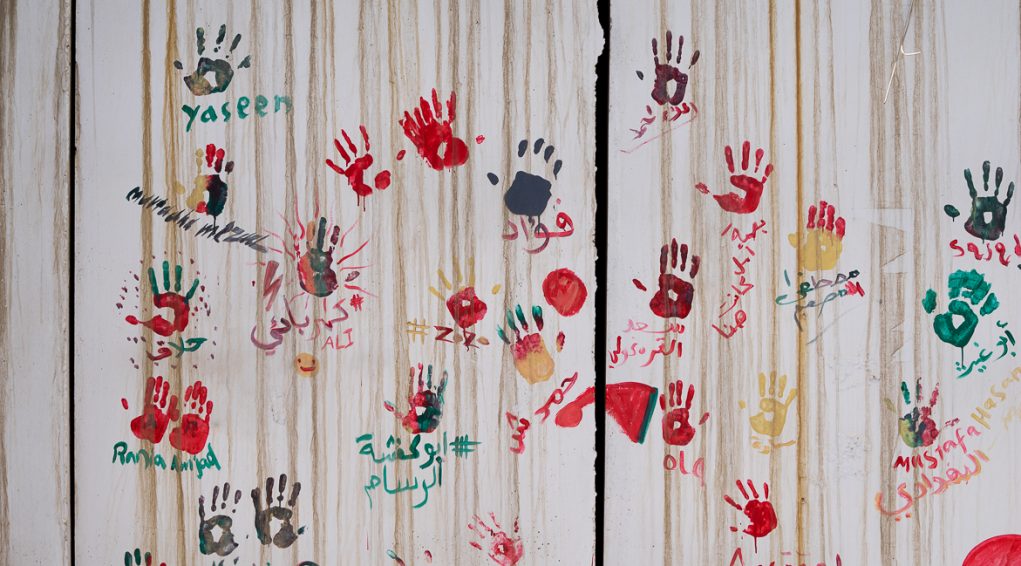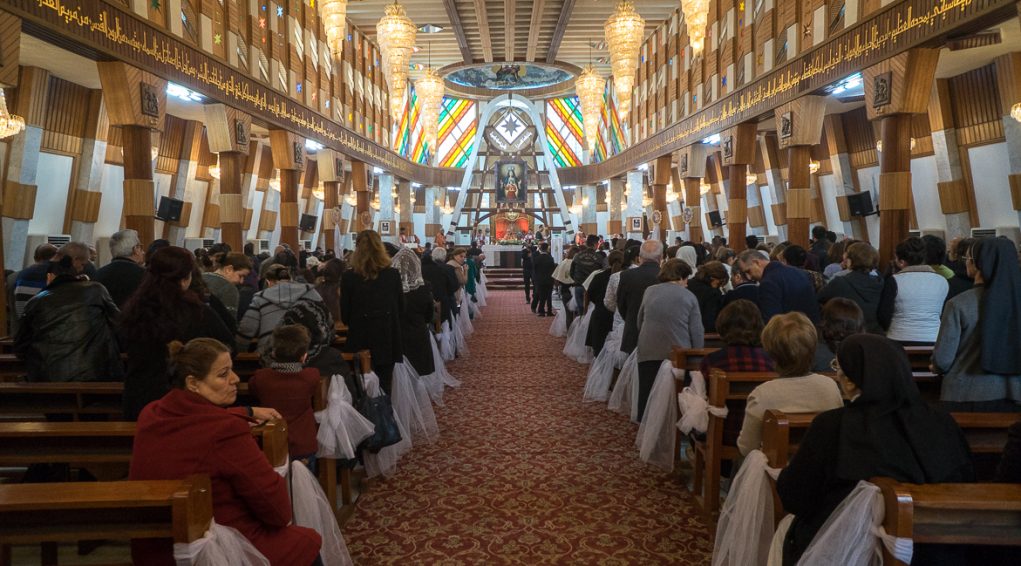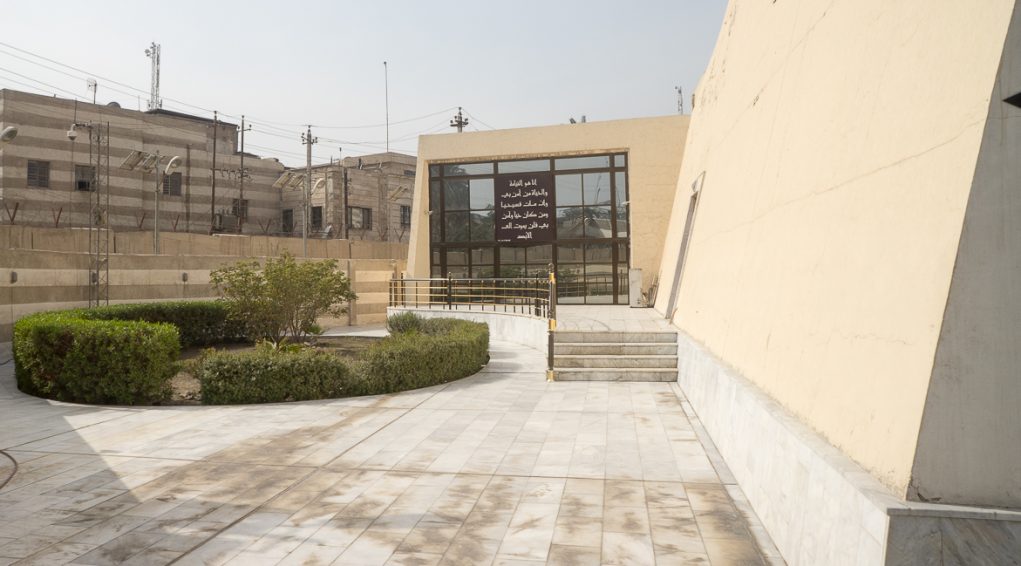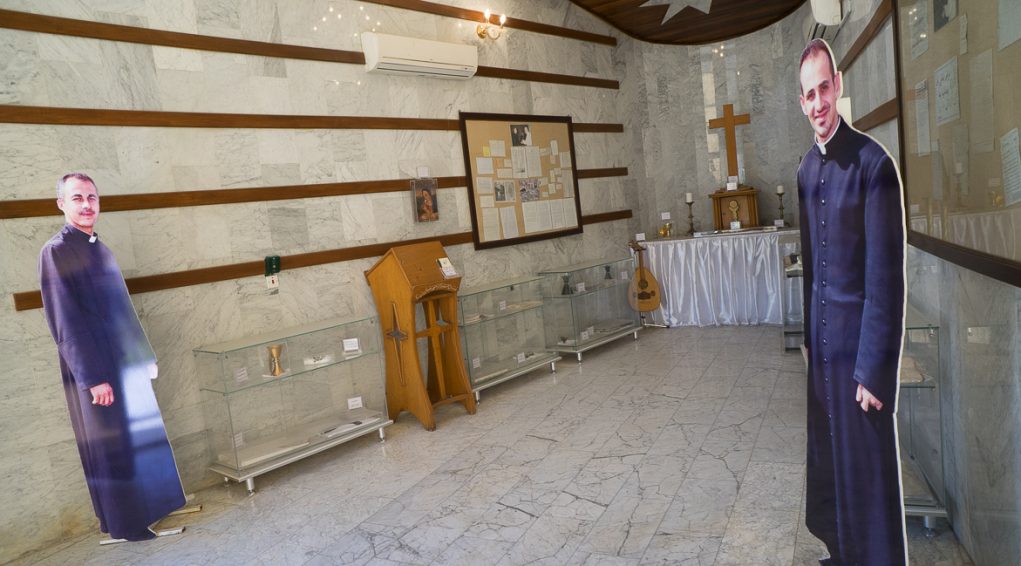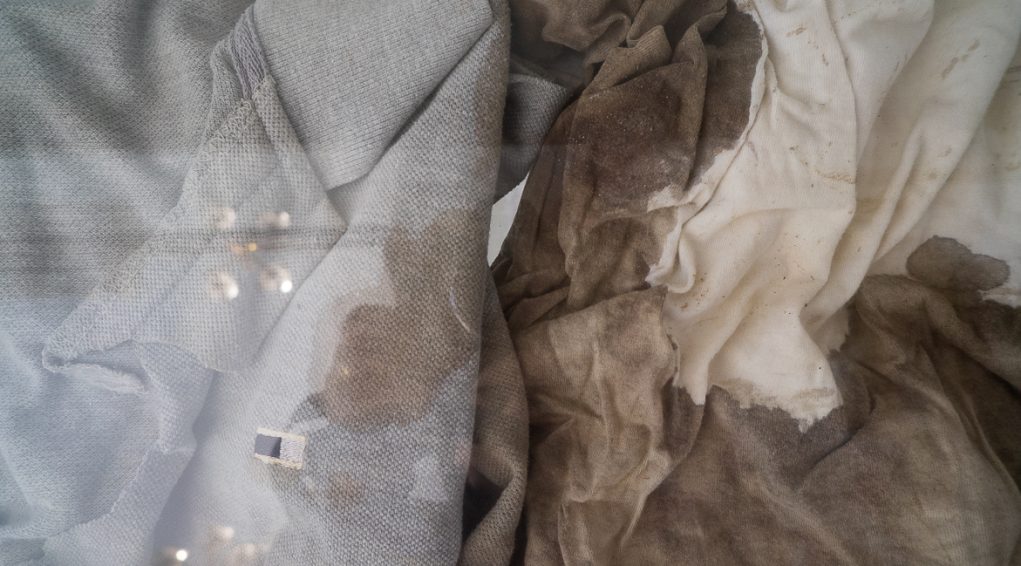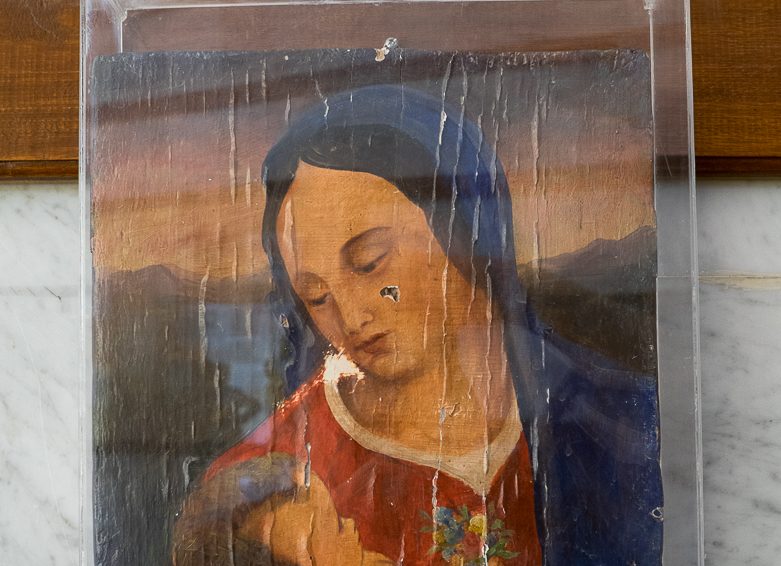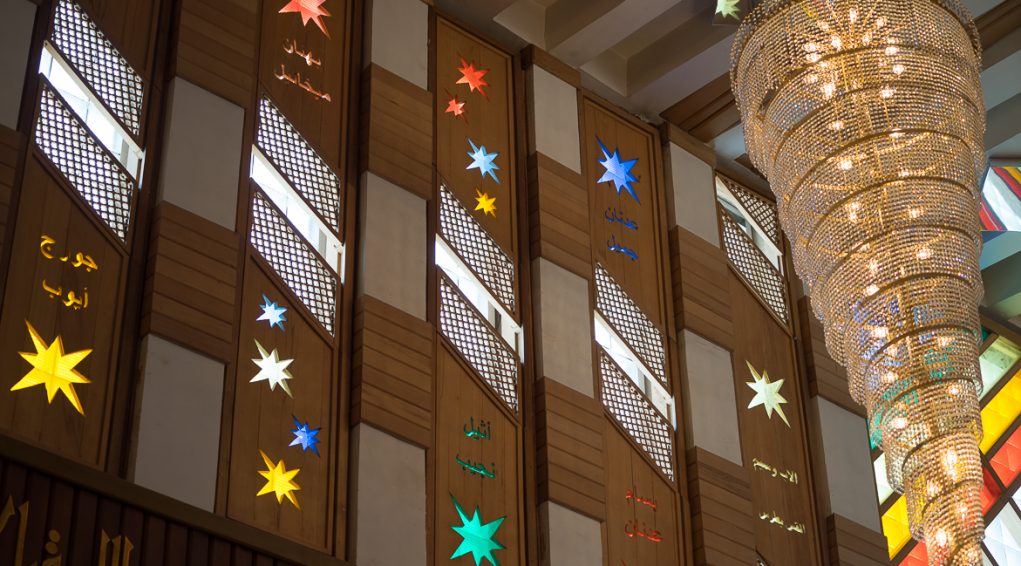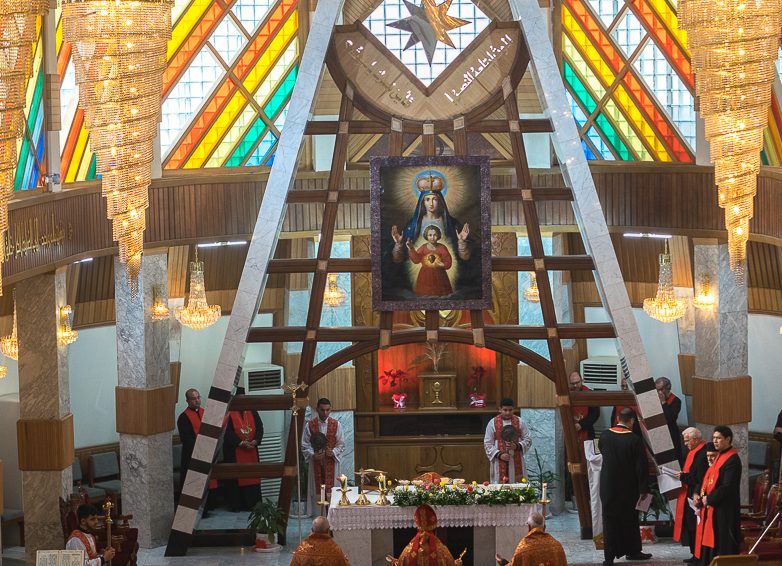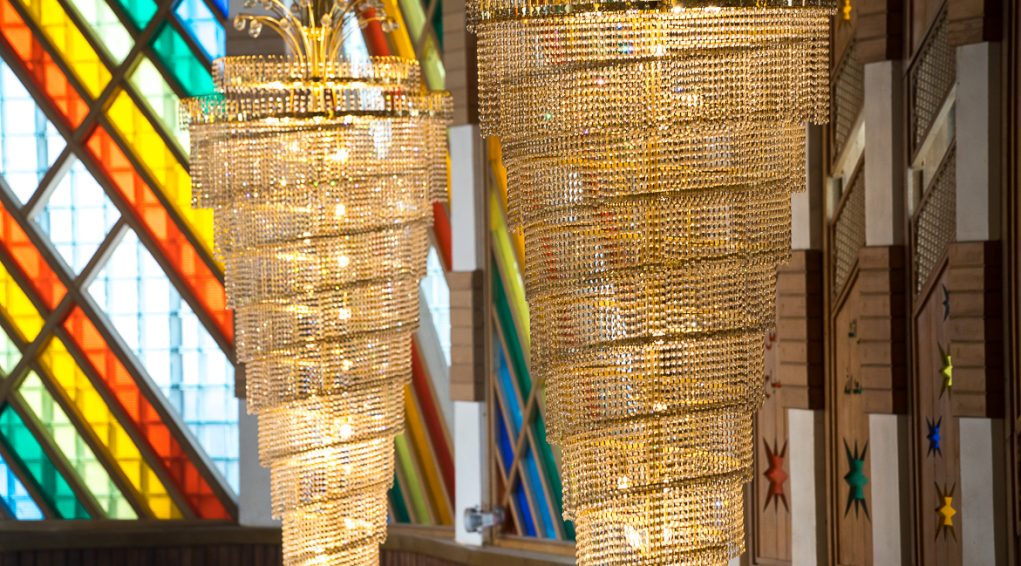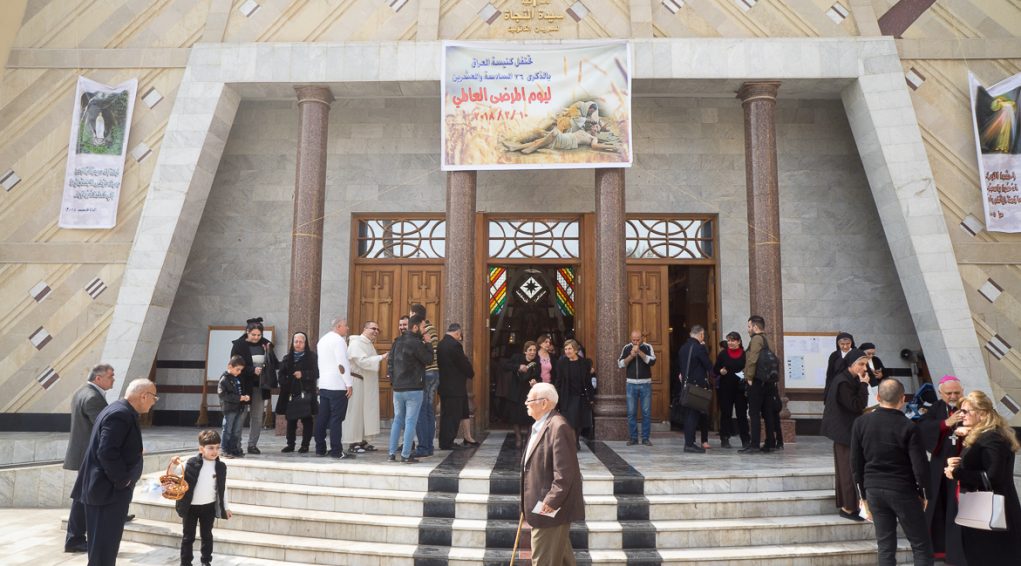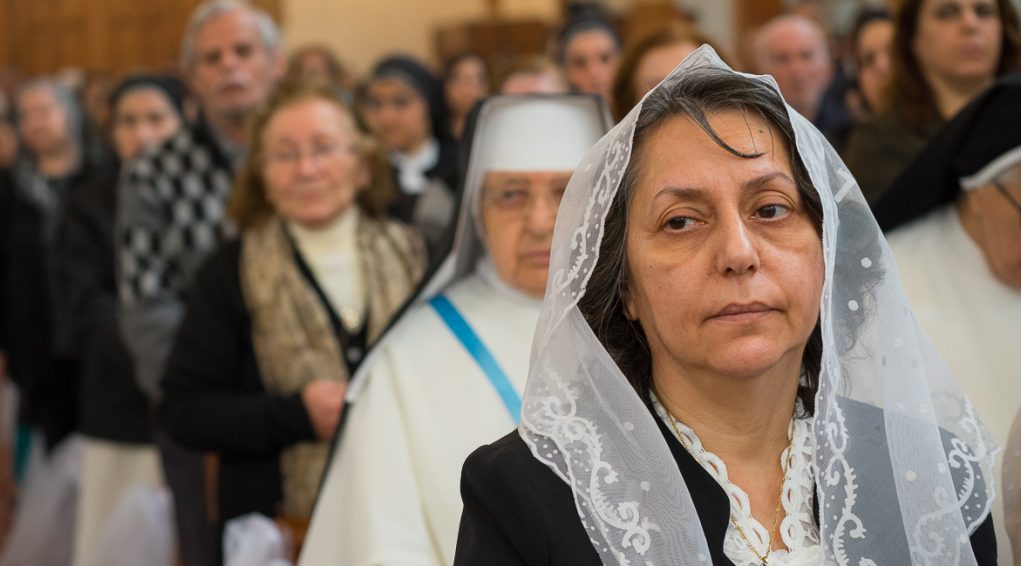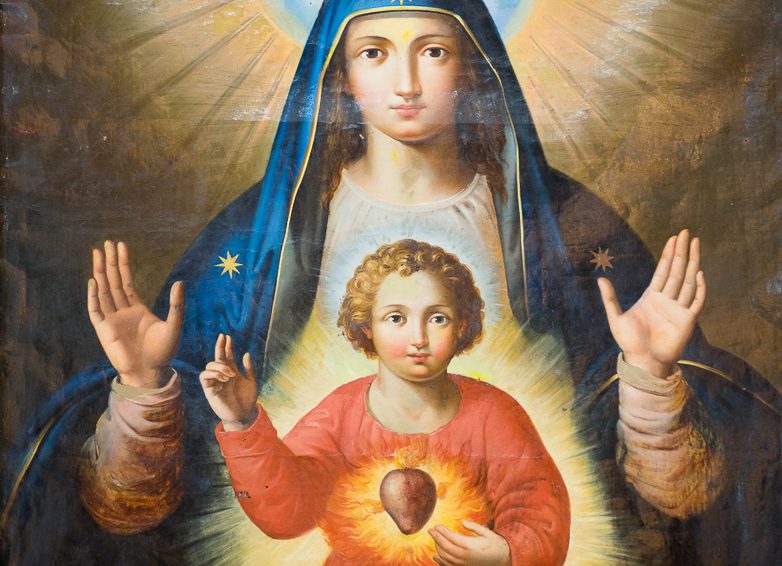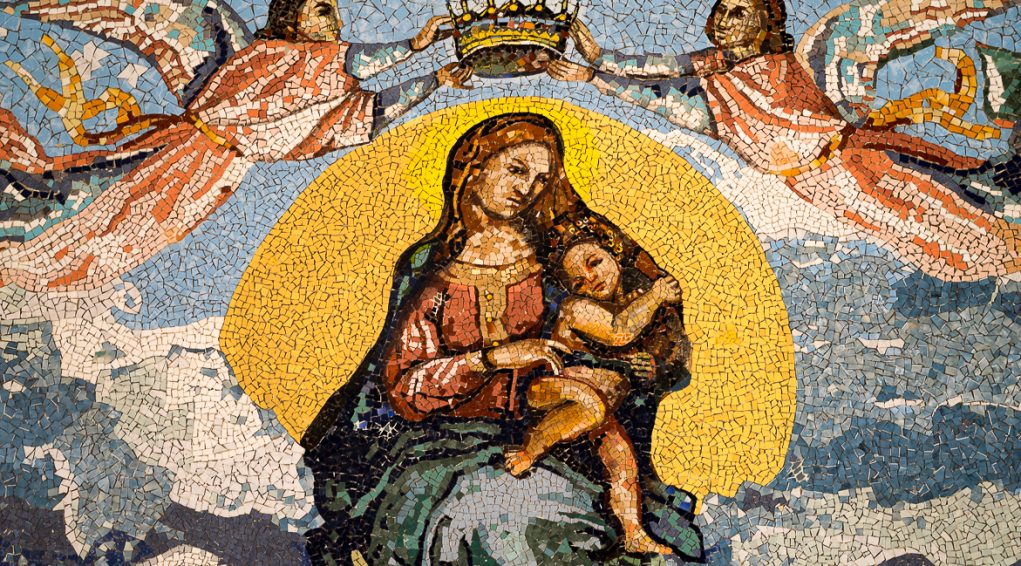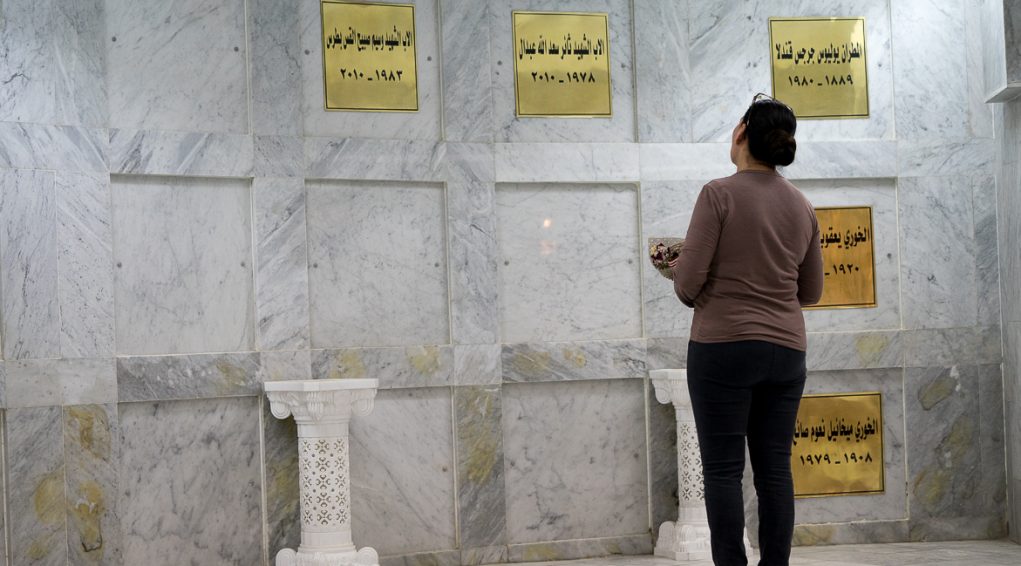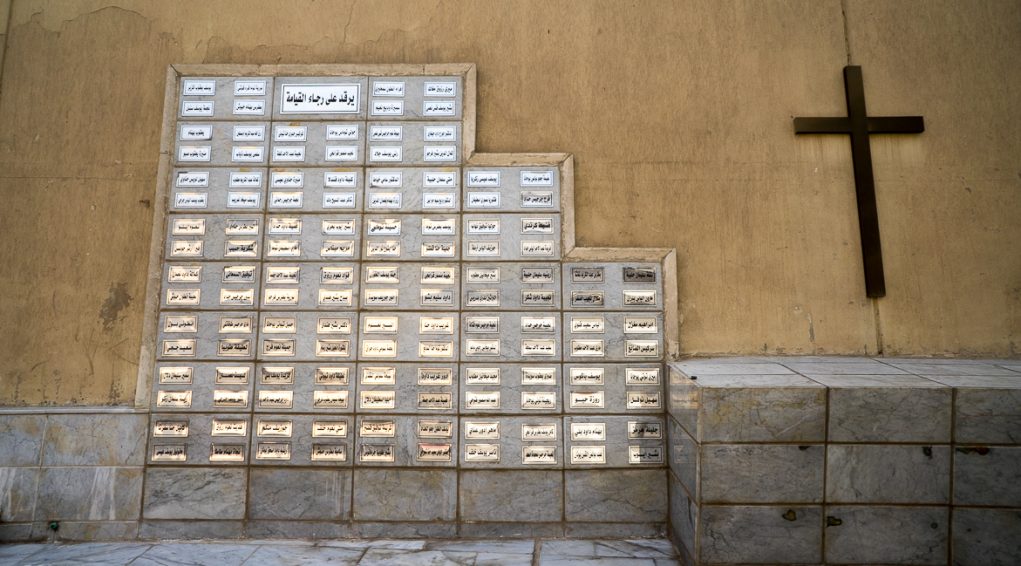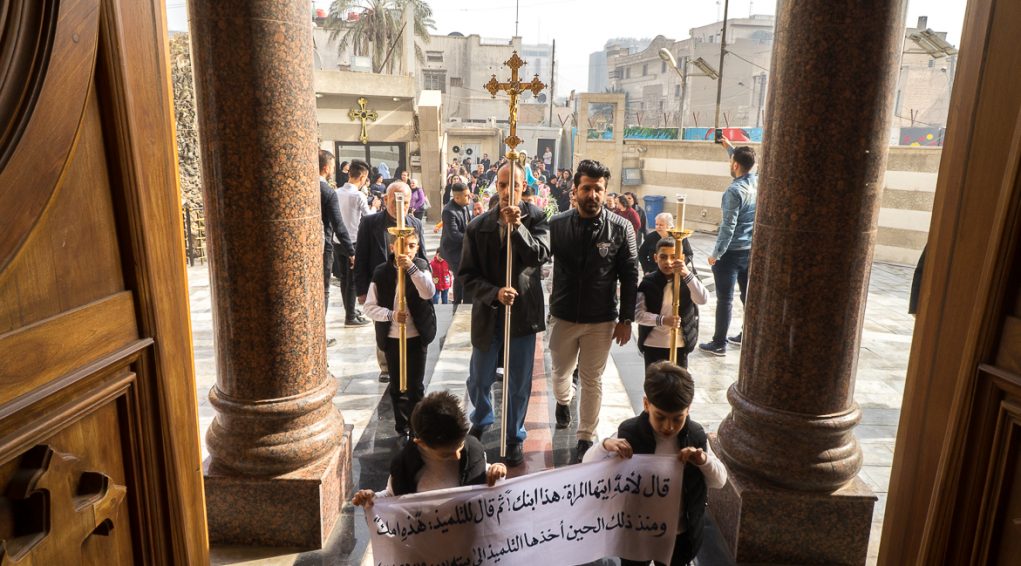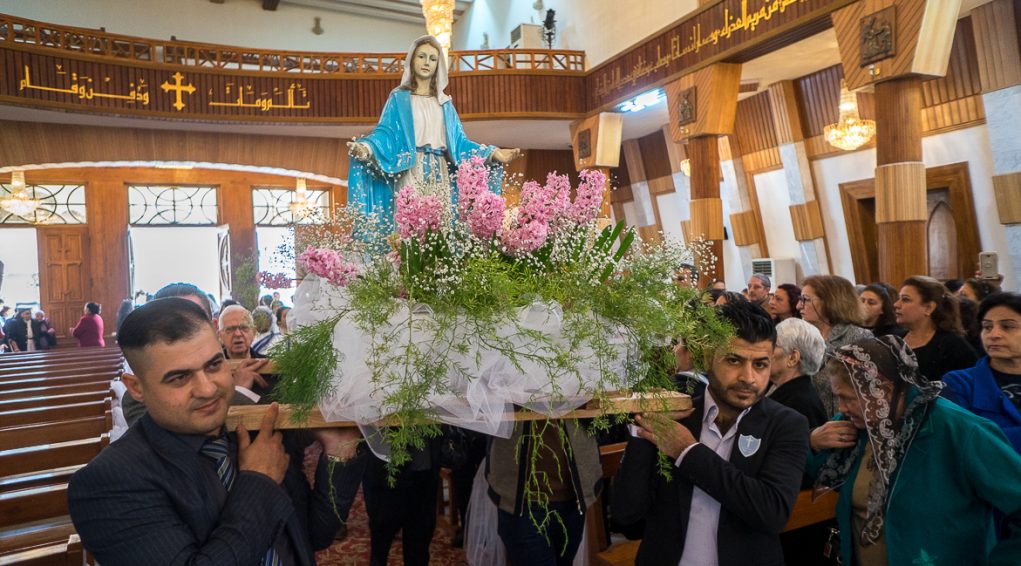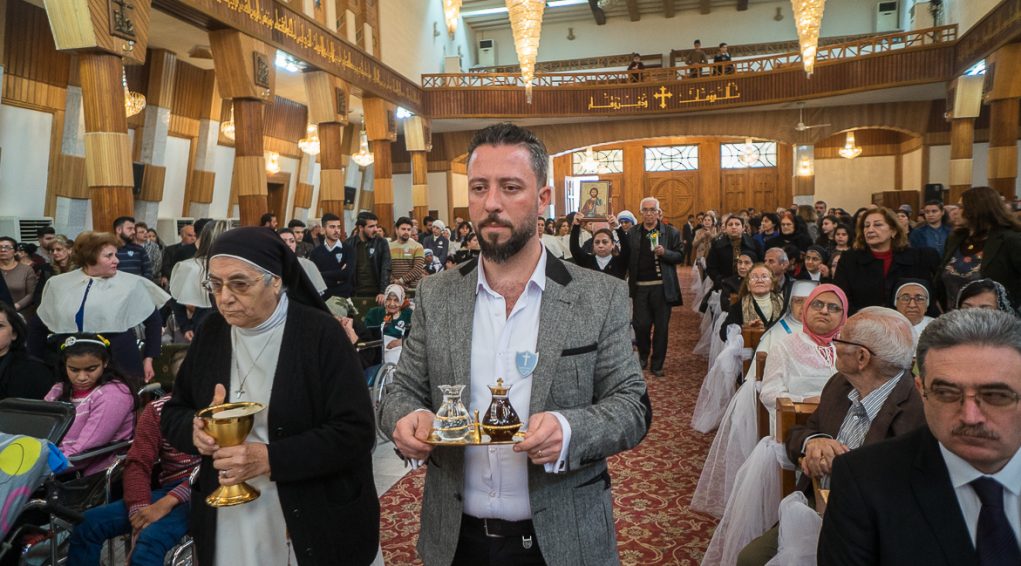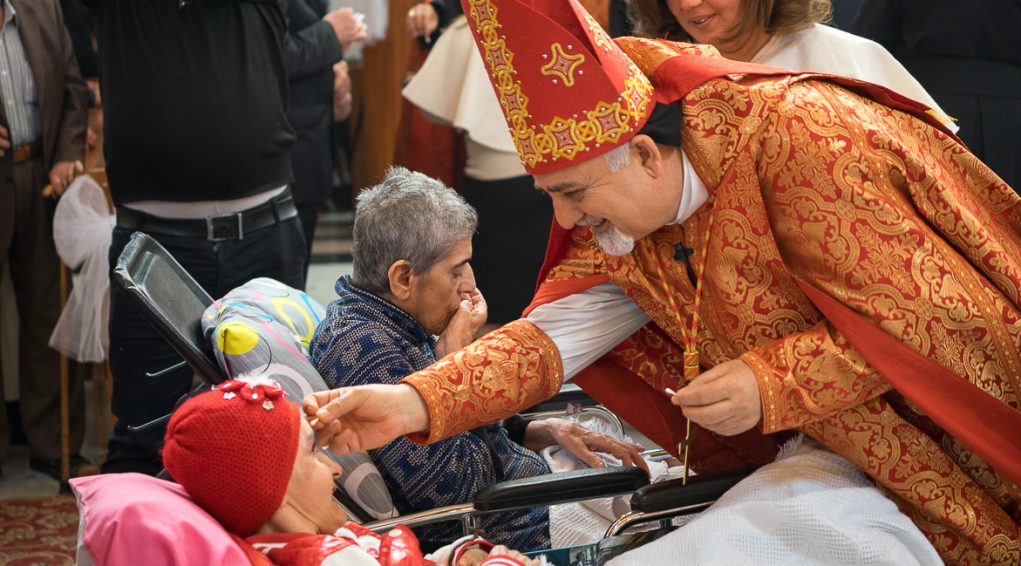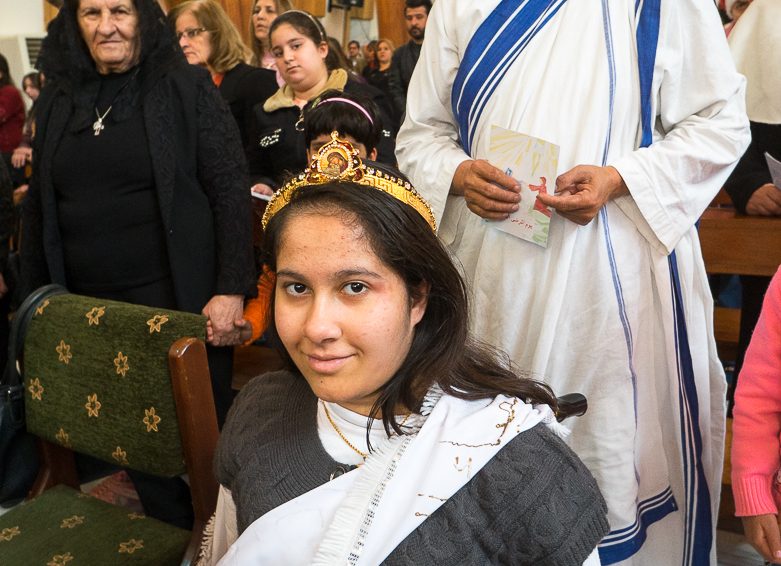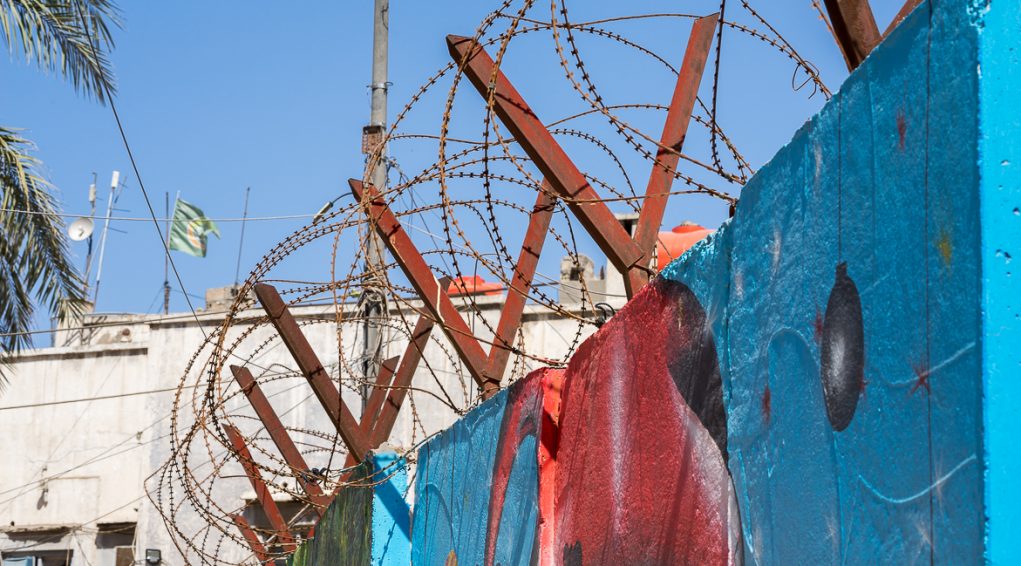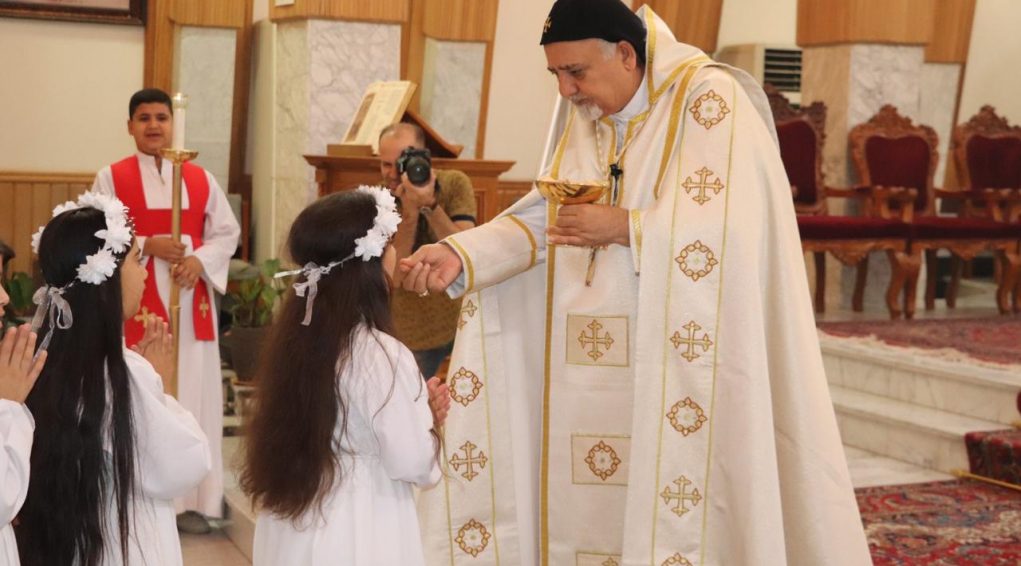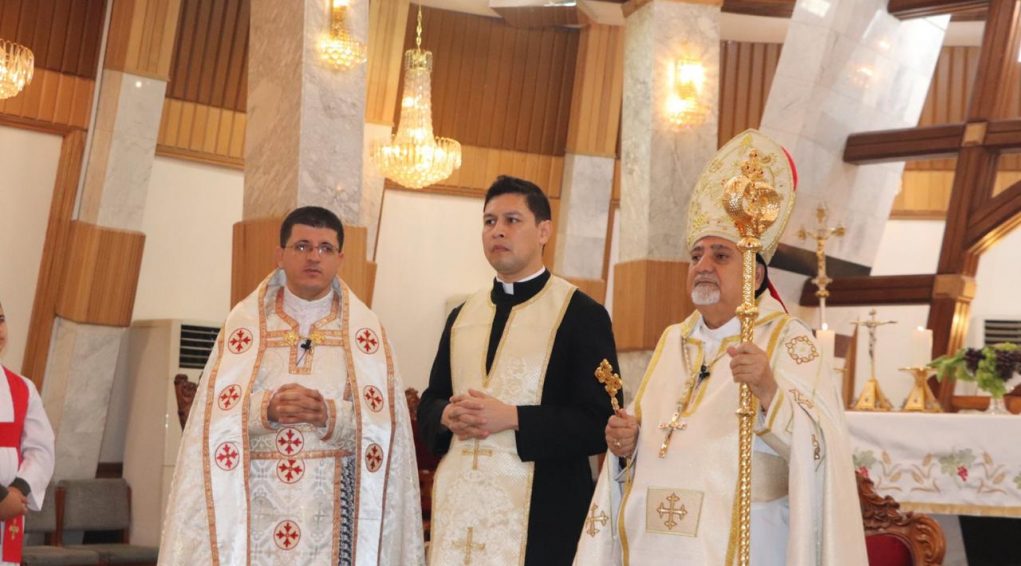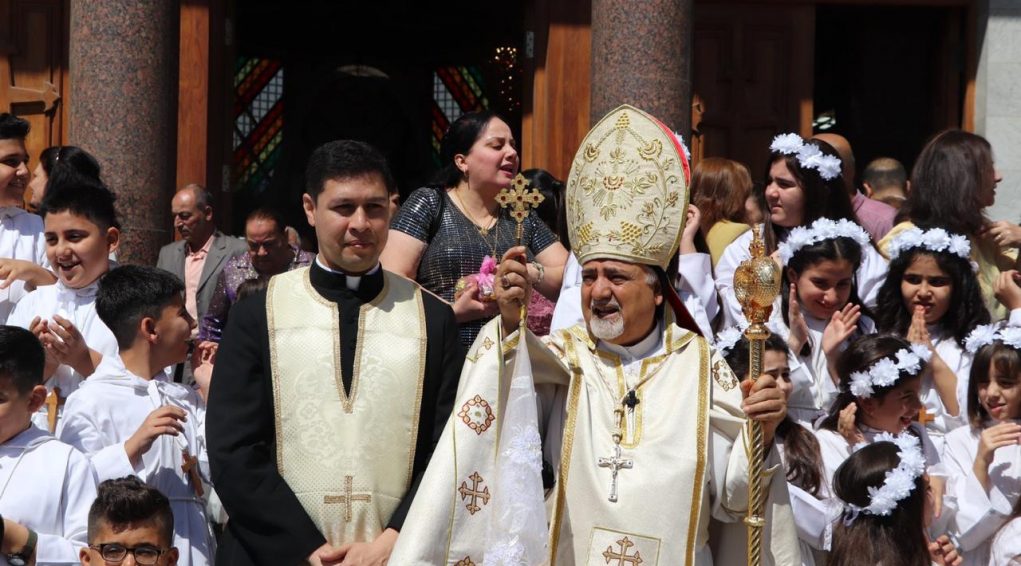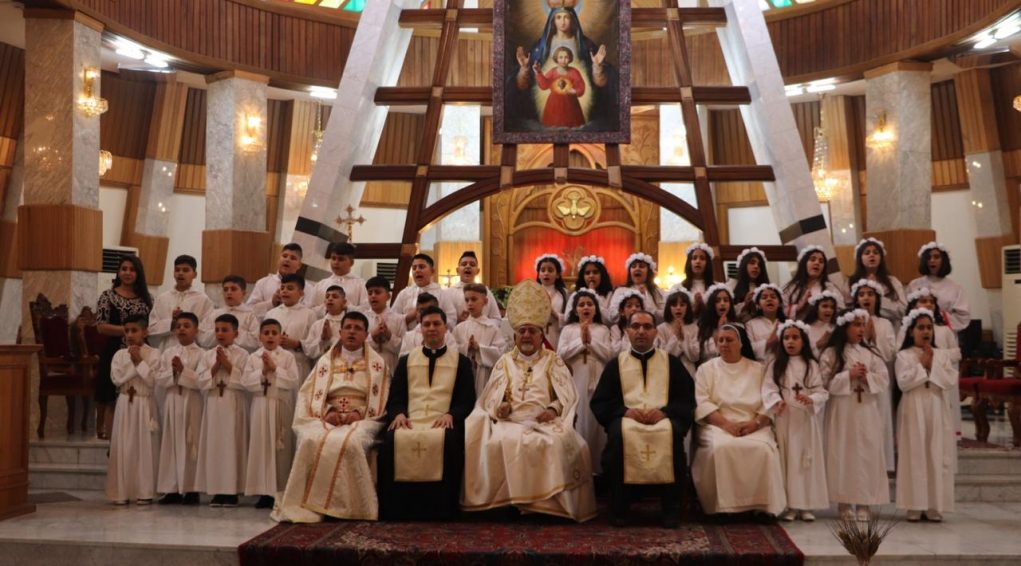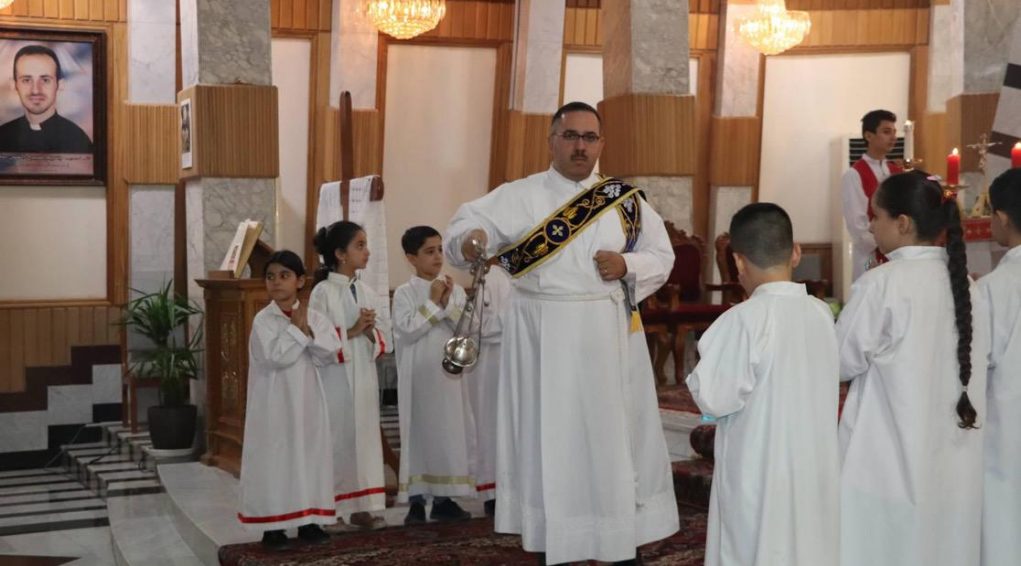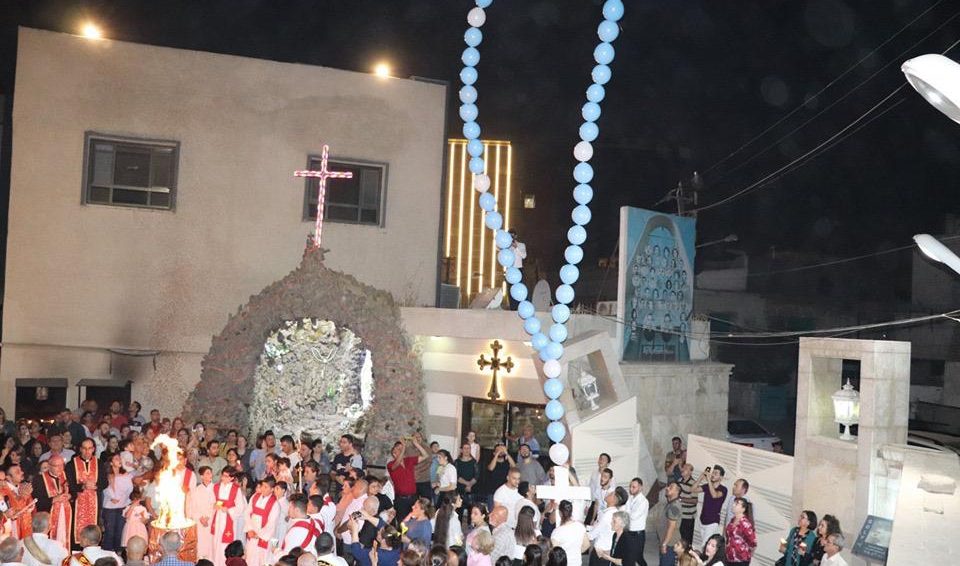Cathedral Sayidat al Najat (Our Lady of the Salvation or Our Lady of Perpetual Help) in Baghdad
The cathedral church Sayidat-al-Najat (Our Lady of Perpetual Help) is located in Baghdad, Iraq’s capital city, in the district of Al Karadah al Sharquiya, 33°18’25.49″N 44°25’34.28″E, at 39 metres above sea level.
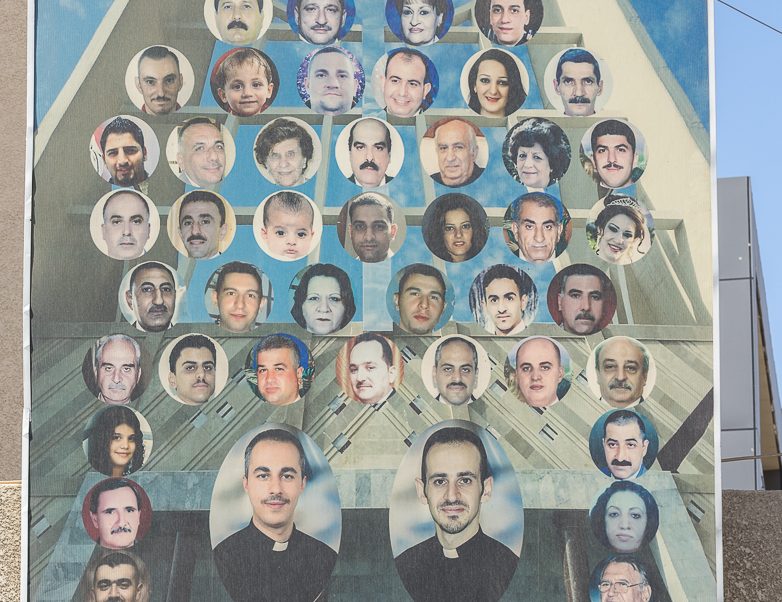
The first primitive church Sayidat-al-Najat had been built in 1952, as a modest place of worship, just before the cathedral was erected in 1968, after 3 years of construction works.
On October 31st2010, one of the worst attacks against Iraqi Christians took place in this cathedral Sayidat-al-Najat. During mass, 47 Christian people were brutally shot dead by a commando of 5 ISIS jihadis. This attack has been a watershed event, the world became then suddenly aware of how much Iraqi Christians were threatened, abused and persecuted by islamic terrorists’ and mafia groups.
Photo : Cathedral Sayidat-al-Najat in Baghdad. Faces of the victims of the terrorist attack on October 31st 2010. March 2018 © Pascal Maguesyan / MESOPOTAMIA
Location
The cathedral Sayidat-al-Najat (Our Lady of the Salvation) is located in Baghdad, Iraq’s capital city, in the district of Al Karadah al Sharquiya (Arkhetah), 33°18’25.49″N 44°25’34.28″E, at 39 metres above sea level. The building is 600 metres away from the Tigris river, on its Eastern bank, and just some hundreds metres from the national theatre.
Fragments of history
A Syriac-Catholic presence in Baghdad was attested in the 19thcentury. However, the Syriac-Catholic community really started at the beginning of the 20thcentury, after the massacre of Christian, Armenian, and Assyrian-Chaldean communities in the genocide by the Ottoman Empire in 1915-1917. On the other hand, a large number of Syriac-Catholics who had settled up north, in the Nineveh province and in the nowadays Iraqi Kurdistan, left these rural areas to move southwards to Baghdad, attracted by the urban and economic development of the city.
In the first half of the 20thcentury, in 1942, the first Syriac-Catholic parish in Baghdad was created, in the ancient district of Agd-al-Nasara. The bishop of Mosul came here from time to time, to celebrate mass. It is only in 1952 that a titular Syriac-Catholic bishop was appointed there, meeting the needs of the growing population of this denominational community.
Beside the cathedral Sayidat-al-Najat built in 1968, another Syriac-Catholic church, St Joseph (Mar Yousif) was built at the same time in the Mansour district, followed in 1982 by the church of Mar Benham.
In total, the Syriac-Catholic community counts 4 churches, among which one is no longer in use, the church of Agd-al-Nasara.
History of a construction
The first primitive church Sayidat-al-Najat had been built in 1952, as a modest place of worship, just before the cathedral was erected in 1968, after 3 years of construction works. The adjacent primitive church became a space for condolences, used during mourning periods.
There was a urge for building the cathedral Sayidat-al-Najat, as a large number of Christian families, including Syriac-Catholic ones, moved from the ancient and densely populated Baghdad’s town centre to the new district of Karadah, modern and attractive, which progressively became the gravity centre for the Syriac-Catholic community life.
Dedicated to the Virgin Mary mother of Jesus-Christ, the cathedral Sayidat-al-Najat (Our Lady of Perpetual Help) was consecrated on March 17th1968 by Mgr Youhanna Bakose, Syriac-Catholic bishop of Baghdad, in the presence of the bishops of all the Iraqi capital’s Christian communities.
The architect and designer of the church was a Polish man named Kafka. He was assisted by the Romaya engineering agency for technical drawings. The Iraqi masonry contractors Victor Tapouni and Adnan Sajed were in charge of the construction works.
The architect’s intention is easy to guess at first sight. This cathedral-church looks like a boat, with its large cross raised as a mast, supporting an arch-shaped sail. The evangelical symbol is obvious: the cathedral Sayidat-al-Najat is a boat, carrying worshippers on board, just like Jesus on the boat with his disciples. And as Mgr Pios Cacha[1]says: “Our church is a boat sailing in the world’s sea”
[1]Episcopal vicar for Syriac-Catholic diocesis of Baghdad, and priest of the Parish Mar Youssif al Mansour/St Joseph in the Mansour
October 31st 2010: a tragedy
On October 31st2010 was committed in the cathedral Sayidat-al-Najat the most horrible attack against Iraqi Christians. A group of 5 to 15 jihadis[1]from the so called Islamic State of Iraq massacred 47 people (children, women and men, among them two priests, Thaier Abdalla and Wassim Sabieh) and injured tens of others. Lacerated bodies covered the ground all over the church. The walls were riddled with bullets and blasts. An inconceivable tragedy[2].
Witness of this disaster, Mgr Pios Cacha, episcopal vicar for the Syriac-Catholic diocesis of Baghdad, was one of the first people to enter the cathedral after the Iraqi security forces’ intervention. He took a picture, one by one, of the 47 dead bodies that littered the cathedral’s floor.
This attack was a watershed event, the world then became suddenly aware of how Iraqi Christians were threatened, abused and persecuted by islamic terrorists’ and mafia groups.
[1]The exact number of commando fighters is not firmly determined. Indeed, in the confusion, some of the terrorists managed to escape while casualties were being evacuated.
[2]Mgr Pios Cacha described what he saw in a 666-page book, which he handed out to the Pope Benedict XVI on January 12th2012.
The restoration erased the stigma
Since then, the cathedral Sayidat-al-Najat has been refurbished and even adorned to overcome the massacre’s scars. Overcoming does not mean forgetting. A memorial has been erected in an adjacent room, where sullied sacred objects can be seen, as well as memorial personal belongings of Fathers Thaier Abdalla and Wassim Sabieh.
And indeed the cathedral looks brand new. The restoration decided by Mgr Matti Shaba Matoka, archbishop of Baghdad, was given to the architect Zeyad. Mgr Mar Ephrem Yousif Mansour Abba, appointed in March 2011 Archbishop of Baghdad, supervised the building and renovation works. On December 14th2012, the cathedral was inaugurated in the presence of nearly all Eastern Christian patriarchs.
In concrete terms, wood panelling covers all the inside pillars and walls. The name of the martyrs is soberly carved in the wood all around the nave. Natural light seeps in through multicolour windows, granting the place with a beaming atmosphere. Large ceremonial chandeliers fill in the visual space and give it its magnificence. Above the altar, an (inside) arch reproduces the (outside) boat’s sail.
This restoration is far from winning unanimous support. Nothing explains spontaneously the history of the attack. Should the victims’ blood have been left as so, as a symbol of what happened here and of how fragile Christianity is in this country? The matter remains unsolvable.
As unique stigma of the river of blood, a red marble line runs on the floor from the altar, crosses the nave and ends upon the esplanade, at the foot of the cathedral’s steps.
Some elements for a demographic analysis
Before the October 31st2010 attack, insecurity was already very high and growing. However, 5 000 families used to be regular attendees of the cathedral Sayidat-al-Najat, 7 000 families at Mar Benham and 2000 at Mar Youssif church. In total, they represented around 14 000 Syriac-Catholic families in Baghdad[1].
Since the attack, the demographic loss has never ceased. In 2018, no more than 1 000 families attend one of those 3 churches of the Syriac-Catholic community in Baghdad.
This exodus goes on inexorably, because fear remains. The terrorist attack at Sayidat-al-Najatis a trauma that has not been overcome, and it is all the more strong as such a tragedy was purely unthinkable.
Discovering some works of art
On the arch above the altar in the church’s choir, hangs a painting of the Virgin Mary (Our Lady of Perpetual Help), hands opened as in supplication, and carrying her son on her heart, Jesus Christ the Saviour. This painting has suffered no deterioration during the attack from October 31st2010, which is considered by many as a miracle. The work of art is a drawing made by the Chaldean priest Mikhael Oufi in Roma in 1904. The painting used to adorn one of the lateral altars of the former Syriac-Catholic Christian district of Baghdad, Agd-al-Nasara.
In the cupola, above the choir, a mosaic made of earthenware tiles features the coronation of the Virgin Mary, holding in her arms her child Jesus. This work of art has been made in 1994 by a Muslim artist.
The graveyard
In a crypt adjoining Our Lady of the Salvation are located the graves of several church servants and clerics, including the two priests killed on October 31st2010.
The other tombs which use to lay on each part of the esplanade are nowadays covered with a paved patio. On the southern wall of the cathedral, the funeral plates for the deceased people are embedded within the wall.
News
Saturday, February 10th 2018, the Syriac-Catholics from Baghdad celebrated the World Day of the Sick, at the cathedral Sayidat-al-Najat. Mass was presided by Mgr Youssif Mansour Abba, Syriac-Catholic archbishop of Baghdad. It was a beautiful celebration, which many people attended, showing stirring faith, exchanging smiles generously, and enjoying a new life. Nothing could let figure out that in that very same place, the worst attack had happened. And yet.
During the pompous and solemn celebration, all worshippers, and the sick people at first, were blessed with the Holy Chrism, delicately rubbed on their foreheads.
At the end of the mass, in the cathedral, the “queen of patient” has been chosen. In 2017, it was a young motor disabled woman, Nour (meaning “light” in Arabic). The crown that made her smiling face look even more beautiful were offered to the new queen, a heavily physically and mentally disabled person.
Unforgettable moment of complicity in a city, Baghdad, where Christian people keep on walking a tightrope, as if taut between two river banks.
In July 2019, Bishop Afram Yousif Abba celebrated Mass for the first communion of the girls and boys of the parish, Father Botros Dardar was beside him at the Sayidat-al-Najat Cathedral of the Syriac-Catholics in Baghdad.
14 September 2019: celebration of the Feast of the Holy Cross. His Eminence Monsignor Alberto Ortega and his Secretary participated in the Mass celebrated at the Sayidat-al-Najat Cathedral.
Monument's gallery
Help us preserve the monuments' memory
Family pictures, videos, records, share your documents to make the site live!
I contribute